
The Buda Castle or castle district (the Hungarian name is Budai Varnegyed) is the historical part of the Buda side in Budapest, which is the Buda Castle district located on Castle Hill, along the Buda Embankment.
Buda castle is a UNESCO world heritage site as the district of Buda castle and is one of the best places to visit in the Hungarian capital.
Buda castle is surrounded by historical (medieval, now restored) a fortified wall, outside of which is a number of monuments, originally medieval in origin, narrow streets, along which the monuments of the 17th and 18th century houses and public buildings and squares, museums, monuments, cafes and restaurants.
Entrance to the Buda castle, free hotel payment will have to produce, unless and, if desired, during a visit to the museums and some of the castle buildings.
Conventionally, the territory of the Buda castle can be divided into two parts: South - the main element of which is the Royal Palace and surrounding area and North, which includes the historic residential urban area.
Currently, the castle of Buda is a city within a city, for examination and unhurried study of which can take a whole day.
The Royal Palace or Palace of Buda castle, also known as the Palace (castle) Buda castle - historical castle and Palace complex, once the residence of Hungarian kings.
In the narrow and literal sense, the Royal Palace is a separate complex of buildings, terraces and courtyards, which occupies the southern part of the Buda castle, but in a wider sense, the name "Royal castle" is often used when referring to the entire territory of the Buda castle that is not entirely accurate, as the area is the Buda castle, it is much more extensive space than the separate castle is the Castle district (the Royal Palace) with its streets and monuments of history and architecture.
The first Royal residence on the site of the modern Royal Palace was built in 1265 in Gothic style. The founder was the king Bela IV.
During its history, the Royal Palace and surrounding area, subjected to a variety of hearth restorations, including alterations and extensions.
Today, the impressive Palace combines Baroque and modernist style with elements of Gothic and Renaissance refers to the period between 1715 and 1769 years.
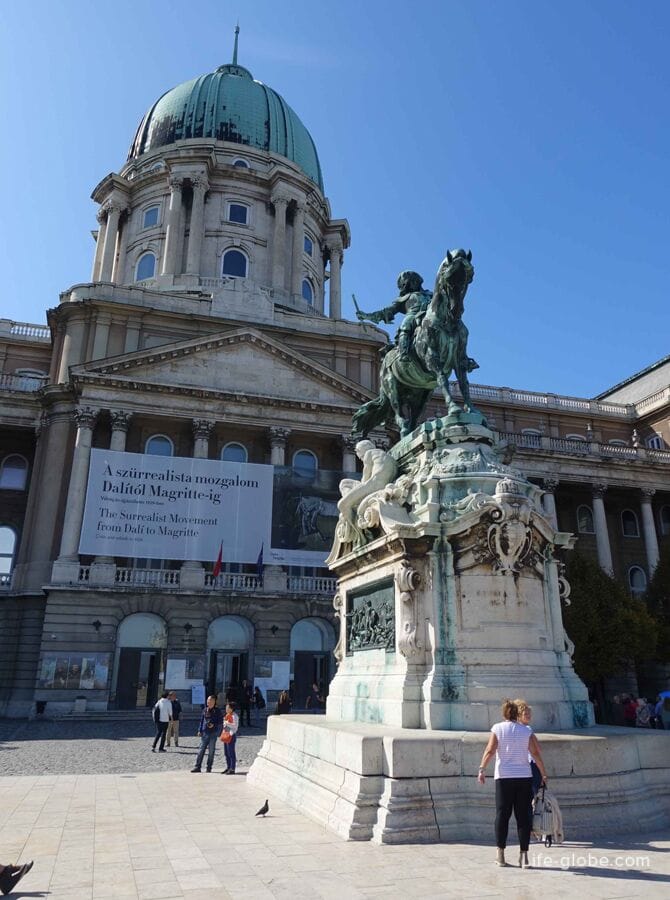
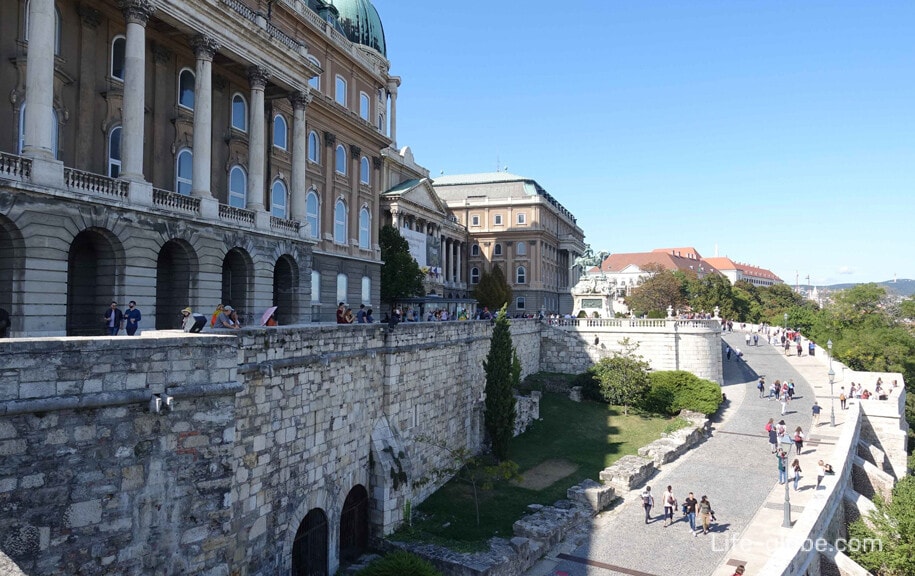
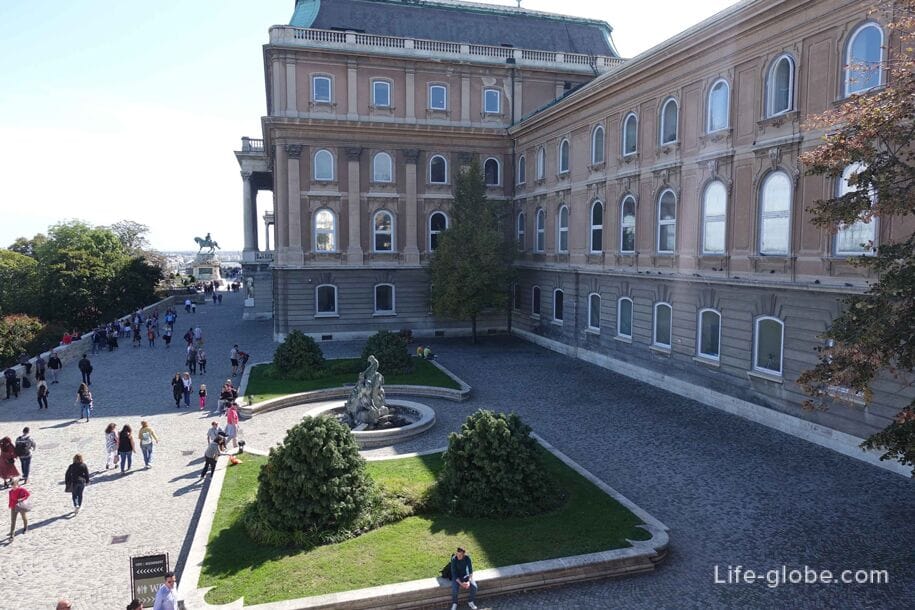
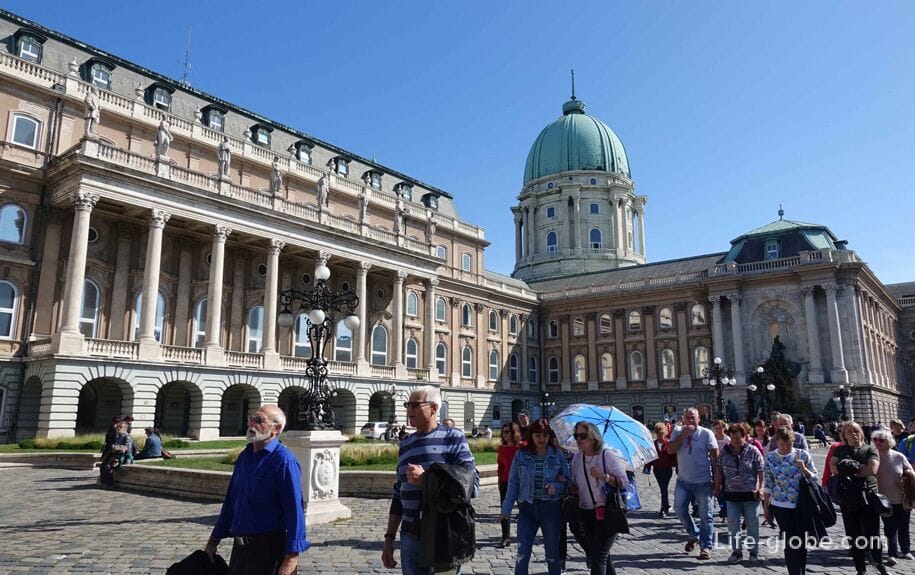
At the present time in the premises of the former Royal Palace are two museums (the Hungarian national gallery and the "Castle Museum" Budapest historical Museum), national széchenyi library, and various government agencies.
Next to the buildings of the Palace terraces, with panoramic views of the Danube and pest, the castle courtyards and garden, located where the architectural monuments, statues and fountains, and exquisite gates and cafes. Read more about the Royal Palace in Budapest...
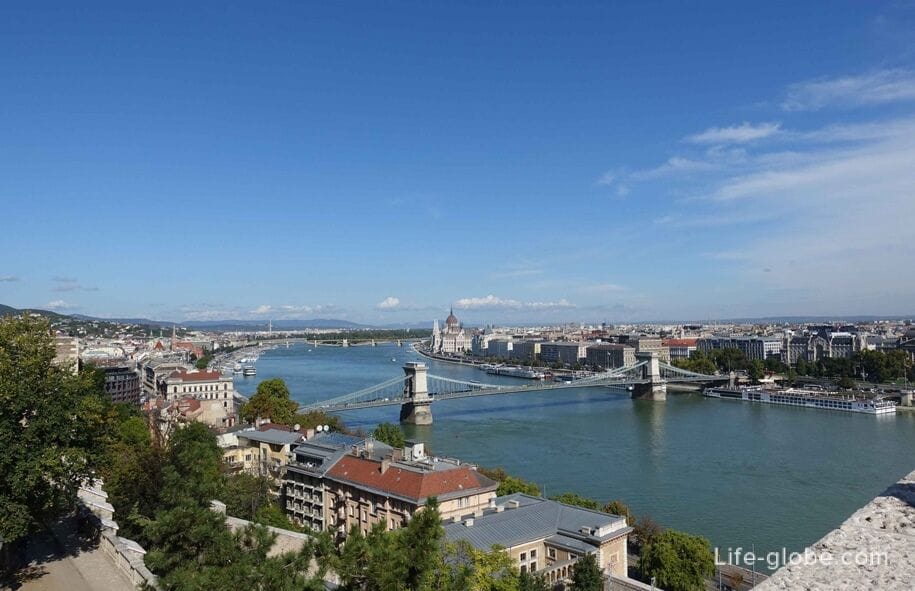
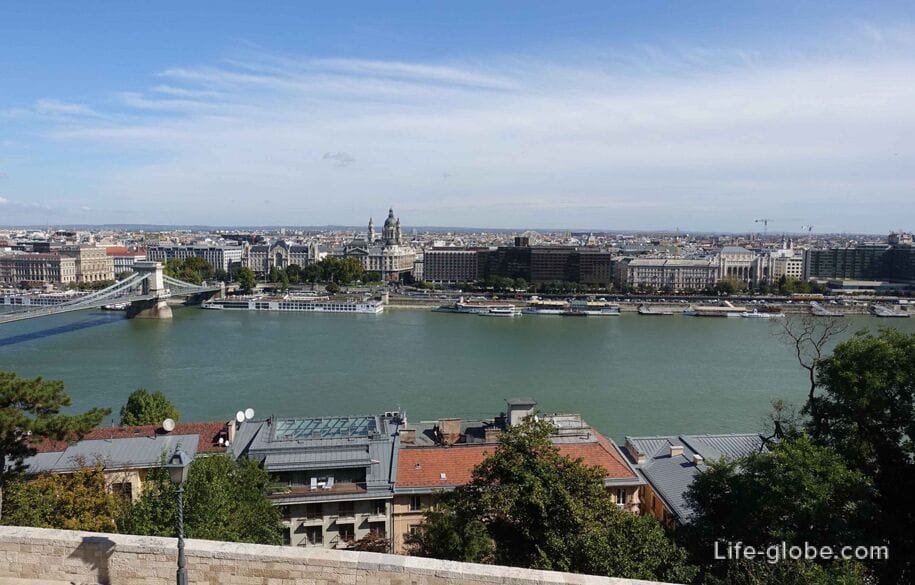
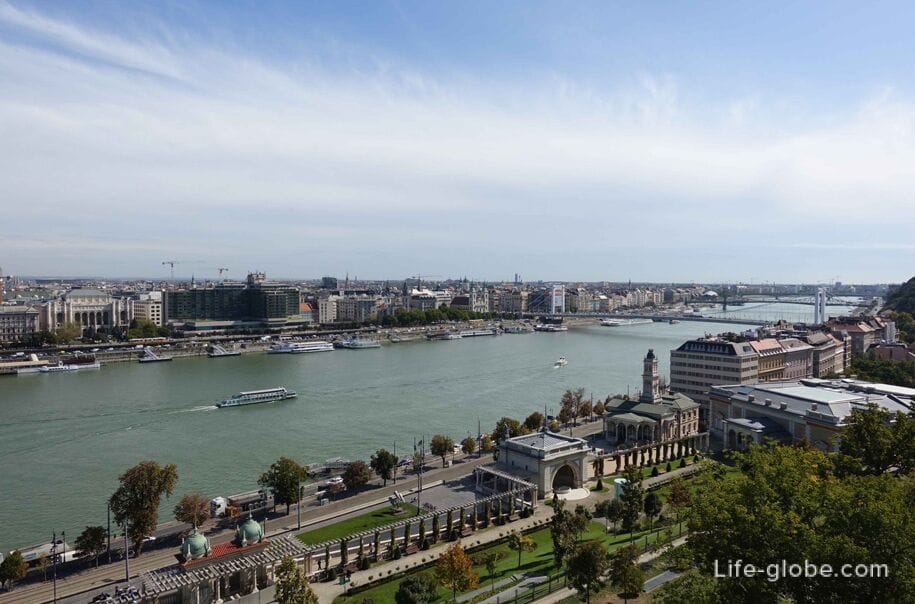
The gardens of the Royal Palace is located in the South-Eastern slope of Castle hill, just below the Royal Palace.
In the garden of the Royal Palace you can walk.

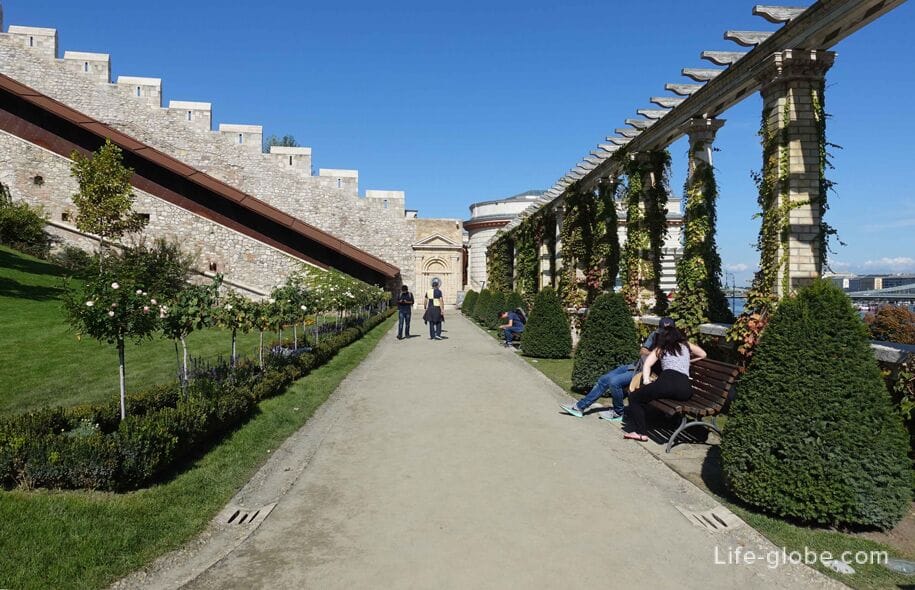
From the embankment of the castle garden is decorated with the so-called Royal gardens Bazaar (Varkert Bazar / Varkert Bazaar), which is a series of arcades with galleries, pavilions and terraces in the neo-Renaissance style and is one of the architectural gems of the historic part of Buda and is an integral part of the Royal gardens. Read more about the Market the Royal garden...

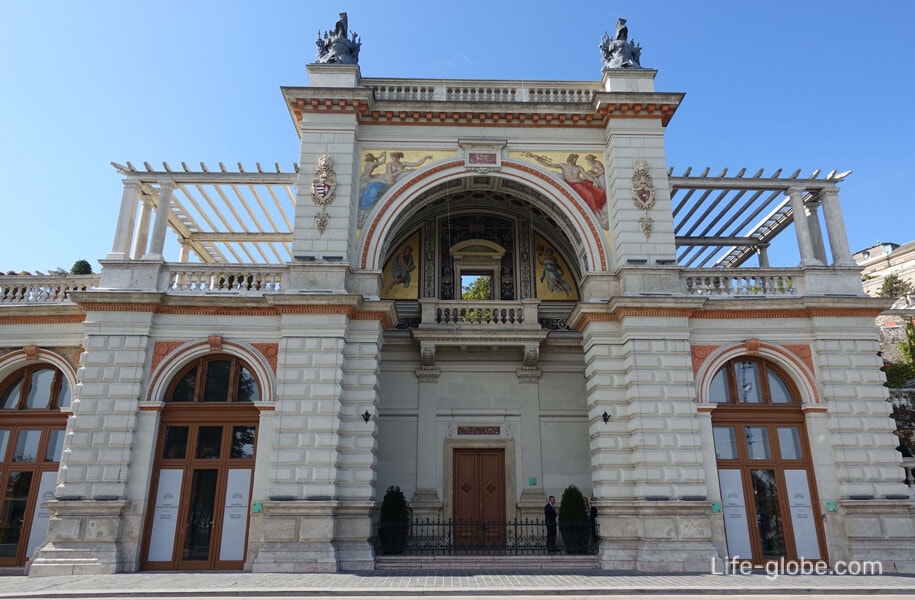
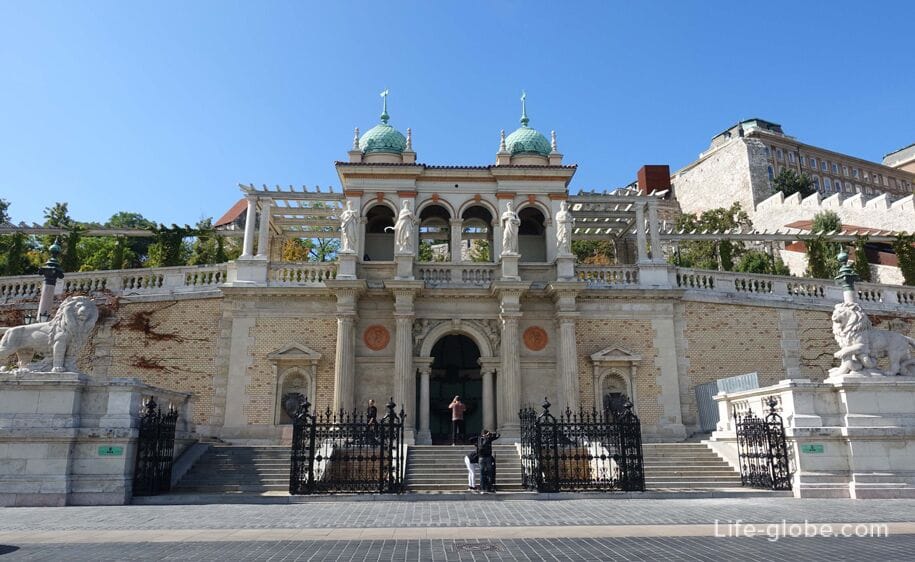
Tower Mace
Tower Mace (Buzoganytorony) is one of the once typical of buildings at the southern end of today's Buda castle, originally probably built during the reign of the Hungarian king Sigismund (1387 - 1437 years). At the turn of the 20th century, when the Palace was completely restored, the tower has also undergone various interventions.
Near the tower there are small neo-classic gates, which date back to 1838 year. In the 19th century access road through the gate led to the yard of the castle, but at the end of the century, the passage was closed, and the gate sealed shut. In 1950 - 60-ies of the gate was re-opened, as before, leading to Buda castle.
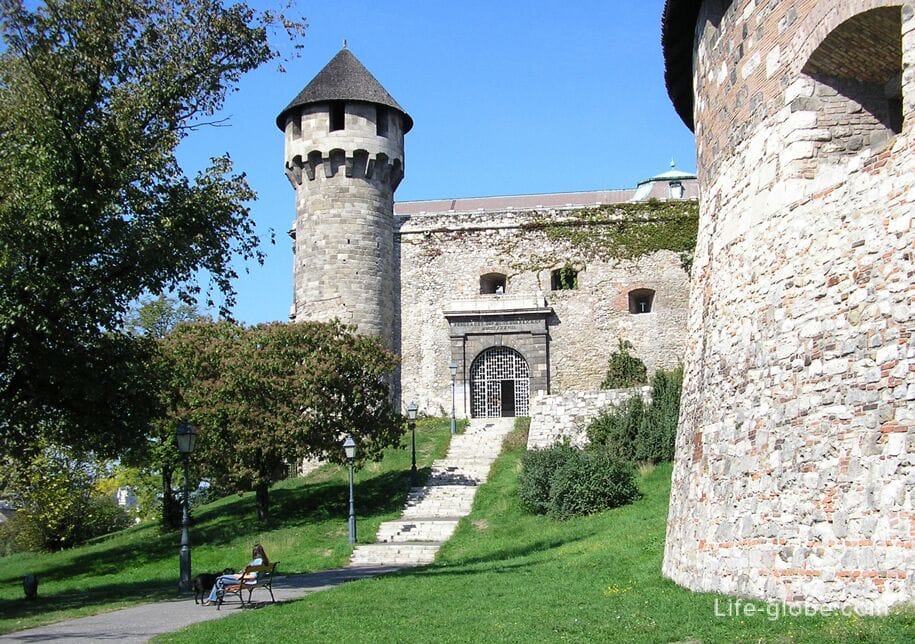
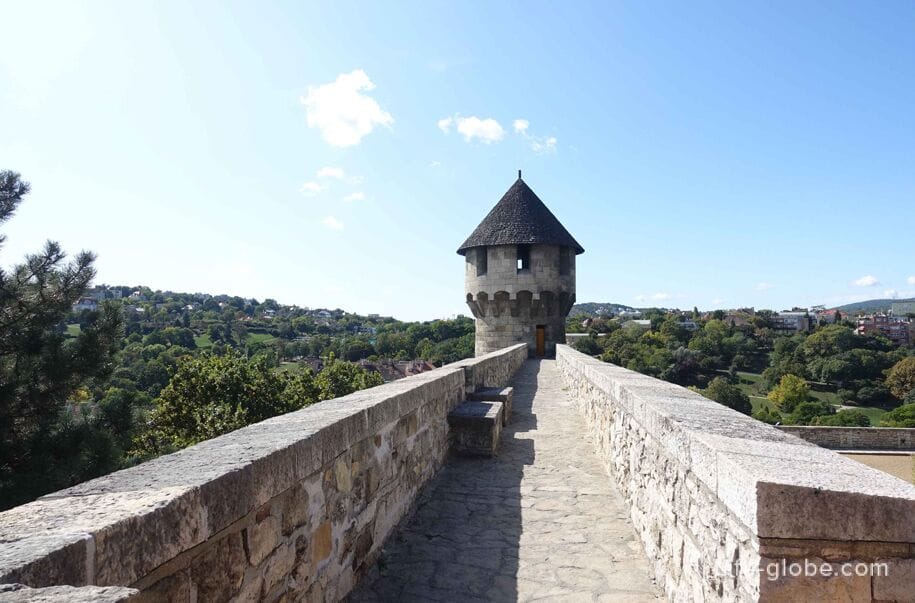
Rondel and South gate
The southernmost point of the current Buda castle are Great Rondell (the Main Bastion / Budavári nagy rondella) and the tower of the Great Gate, located on the southern slope of the Castle hill, just below the Royal Palace.
The Rondell was the southern extremity and one of the largest defensive structures of the outer belt of a medieval castle, with an inside diameter of 33 meters. Its impressive wall thickness of 5 meters was equipped with 7 guns, and outside it was steep, but not vertical.
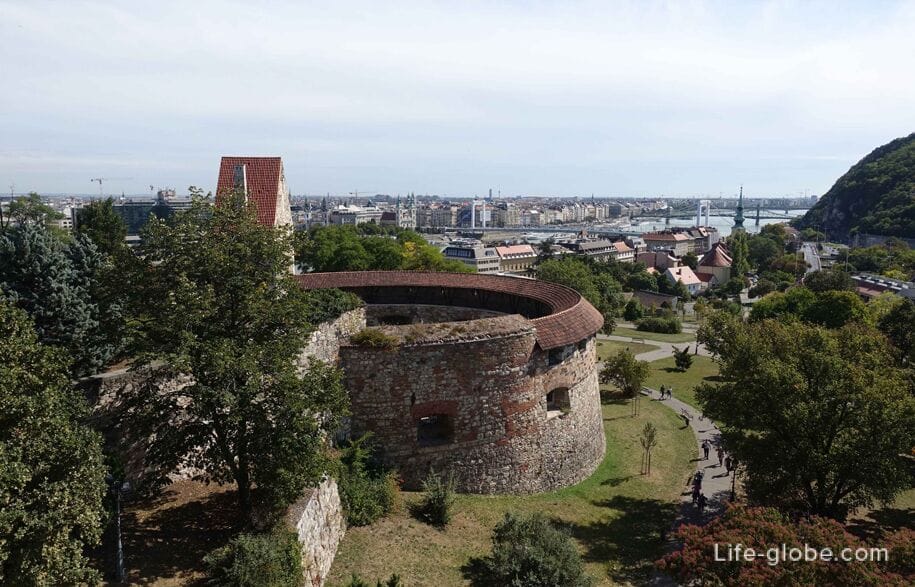
Next to the Bastion in the medieval walls are the entrance gate, with a wide opening, previously destined for travel and less for pedestrians.
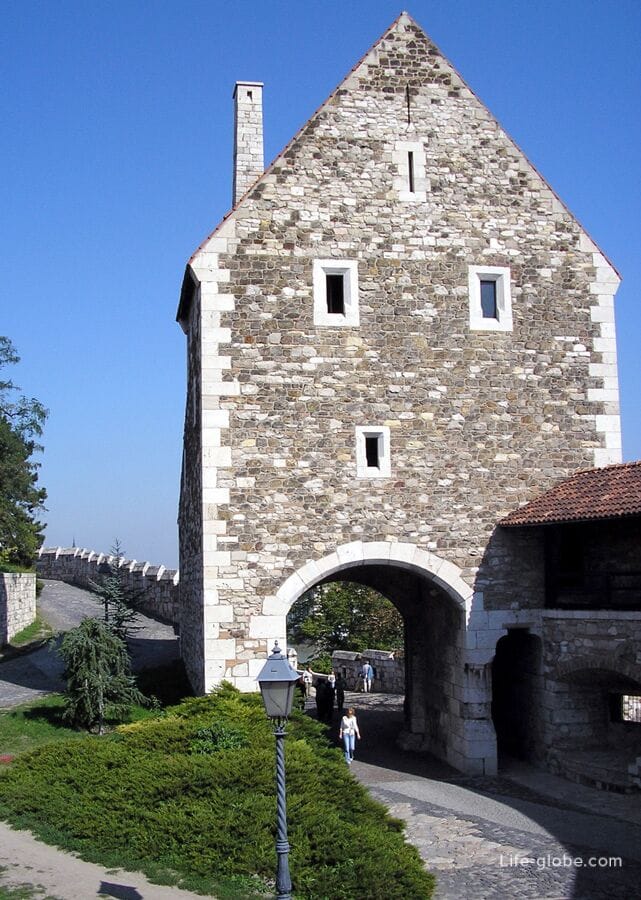

Today, the Mace tower, the Bastion and the southern gate of the former fortress system that surrounded the Royal Palace, are an important historical part of the Buda castle and cityscape of Buda.
On the North side of the Royal castle lies St. George's square, also known as St. George's square (Szent György ter) is one of the main squares in the castle district of Buda.
In the middle ages the area was a prominent place in the city of Bodø.
In the Western part of the square you can see the historic remains of the former buildings and walls.
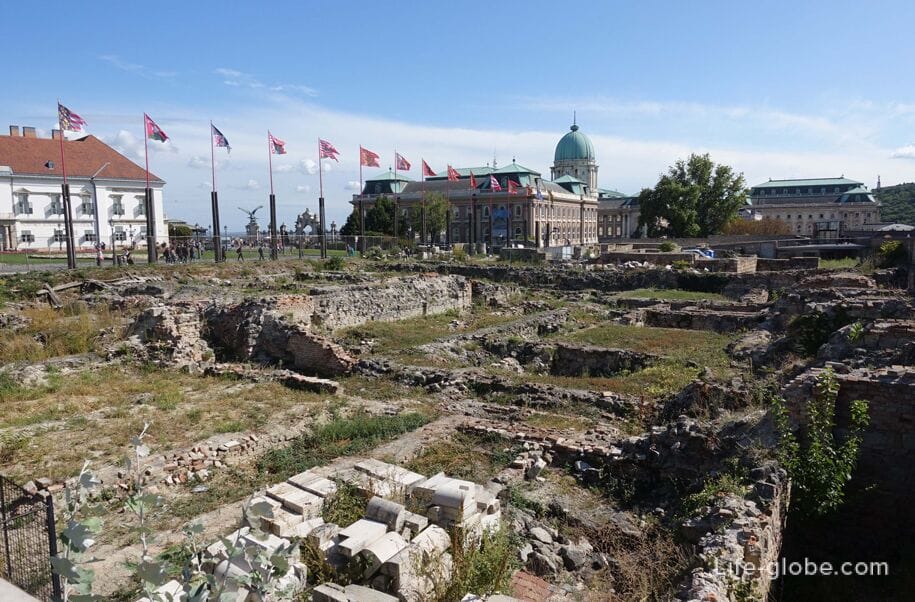
Along the entire area of the former fortress walls is a Western viewpoint that gives a panoramic view of the Western part of Budapest, including the district of Krisztinavaros (Krisztinavaros).


The main objects of the St. George's square are:
- the Palace of Sandor (Sandor Palace, the Hungarian name Sandor-palota), also known as the Alexander Palace.
The Palace was built between 1803 and 1806 in neo-classical style by the architect mihály Pollack for count Sandor.
The building was almost completely destroyed during the Second world war and has long been used as Museum warehouse. Restoration work was carried out in 1989 - 1990 and 2000 - 2002.
The interiors of the Palace reflect its original state since 1806, and the atmosphere - the period between the two world wars.
Now the Alexander Palace is a place of accommodation of the President of the Republic of Hungary and the office of the President, and the entrances to the building is guarded by a guard of honor;
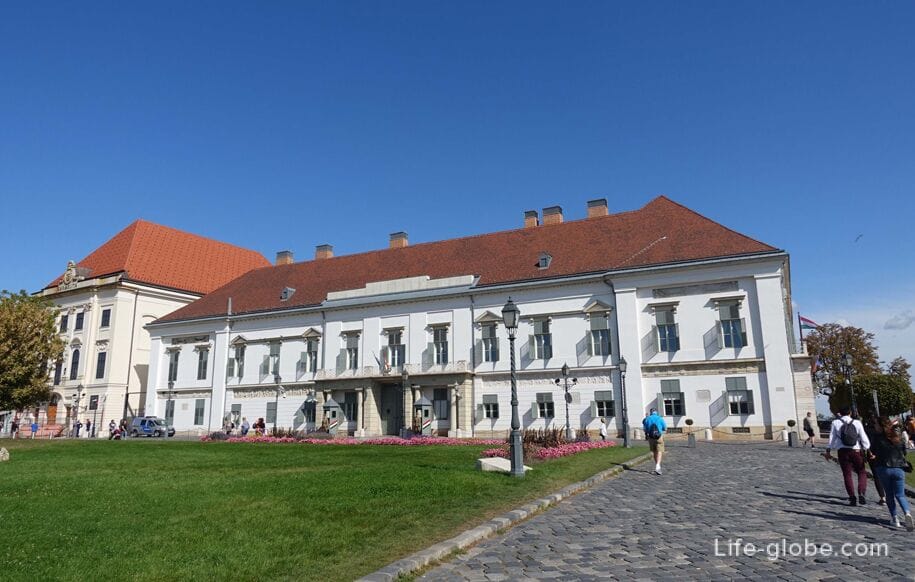
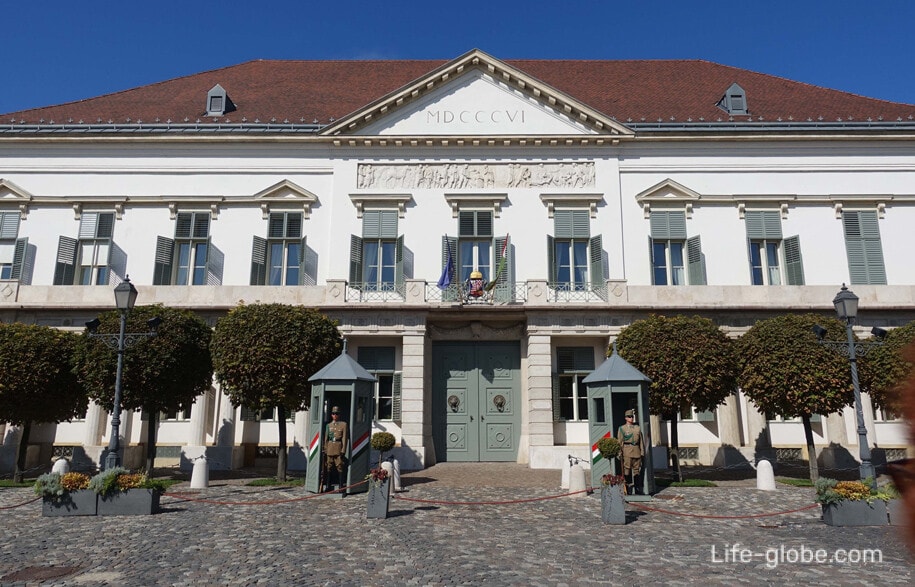

- the building of the castle theatre or the court theatre of Buda is a former Carmelite monastery (the Court Theatre of Buda, the Hungarian name Varszinhaz), built in 1763, the Franciscan Church is dedicated to St. John and destroyed during the siege of Buda in 1686.
In 1787 the monastery was converted into a theatre with a capacity of 1,200 people. The castle theatre was the first permanent theatre in Buda. This is the only building of the Hungarian theatre of the 18th century.
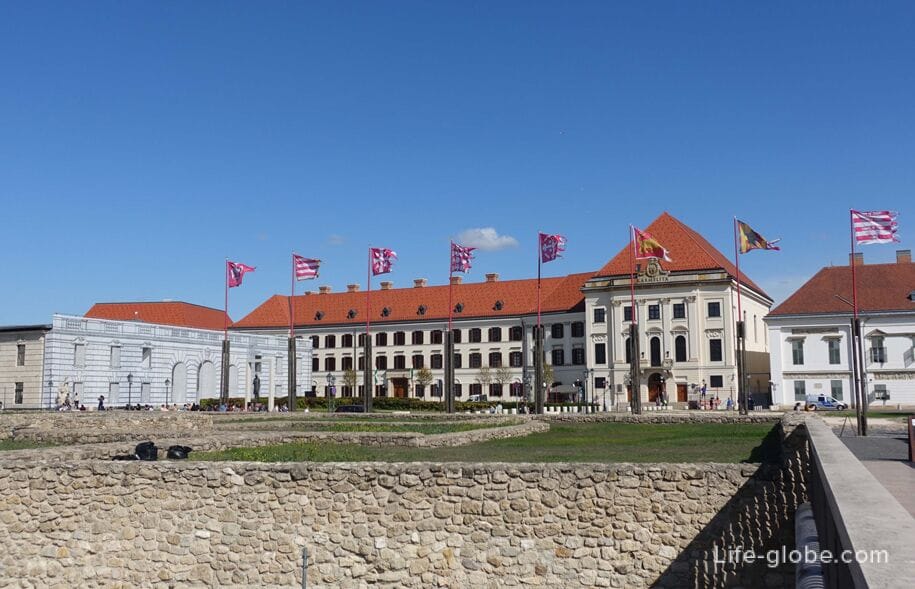
In the South-Eastern part of St. George's square, near the Sandor Palace, is the upper station of the funicular to the Castle hill (Budavari siklo) of the 19th century. The lower cable car station located at the West side of Chain bridge, near the Zero kilometer in the Adam Clark square (Clark Adam ter).
Tariffs and opening hours of the cable car we recommend to check before visiting on the website.
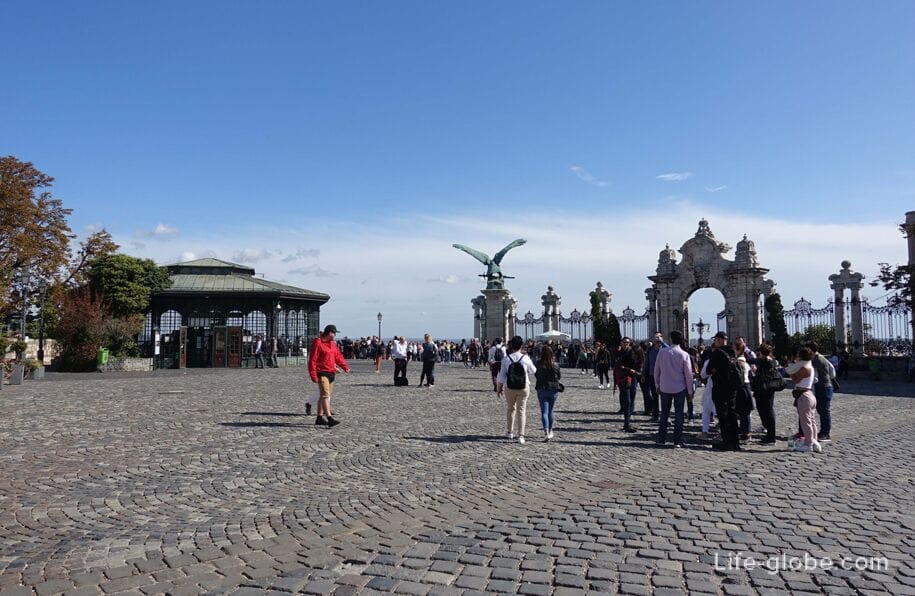
Photo of the lower station of the funicular

Near the upper funicular station is East view point area of St. George, which offers panoramic views of the Danube river and the district of pest, including Vigado concert hall, Gresham Palace, St. Stephen's Basilica and the remarkable Hungarian Parliament buildingwhich is one of characters and one of the main attractions of Budapest. Read more about St. George's square...
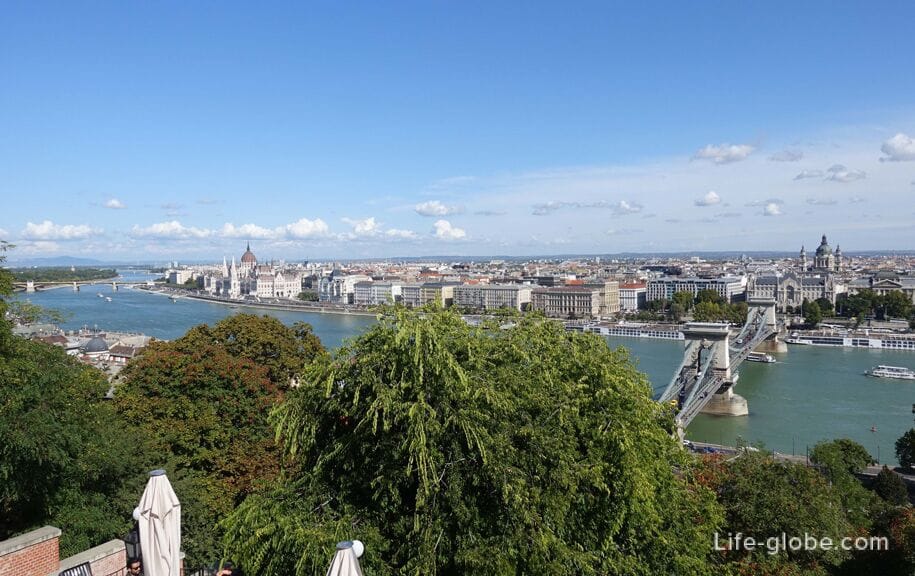
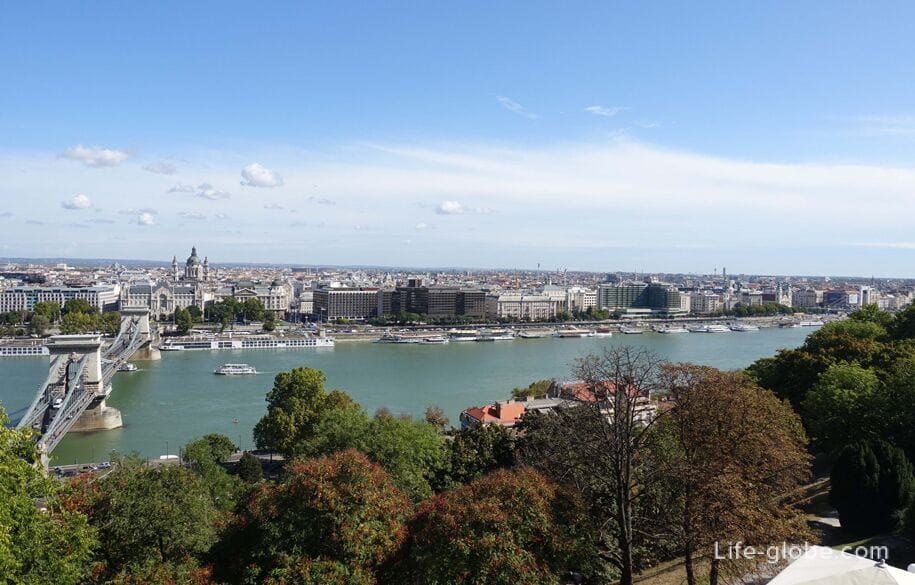
Heading North from St. George's square originate the narrow streets of the former residential (urban) part of Buda castle.
The historic residential district stretches from St. George's square and to the Northern extremity of the district of Buda castle.
Along the streets of the low, predominantly two-storey, historic building with memorial tablets and courtyards painted in bright colors, some of which are museums, shops, cafes and restaurants with tables under the open sky, as well as accommodation facilities, including hotels and apartments.
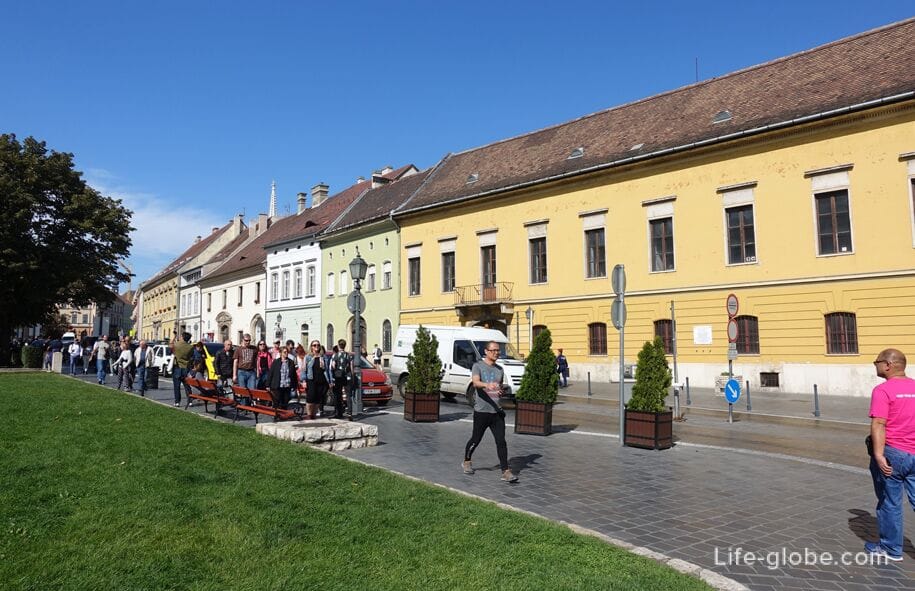
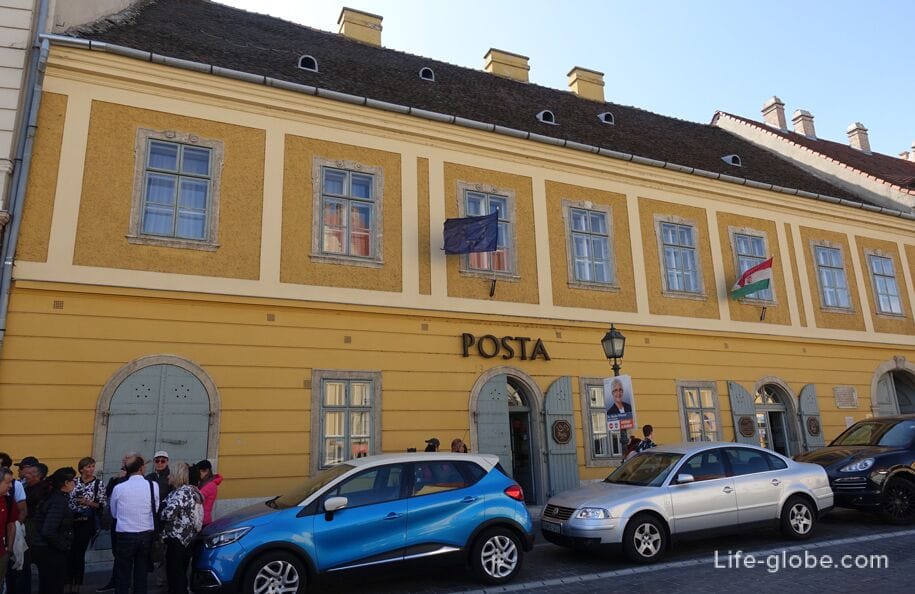

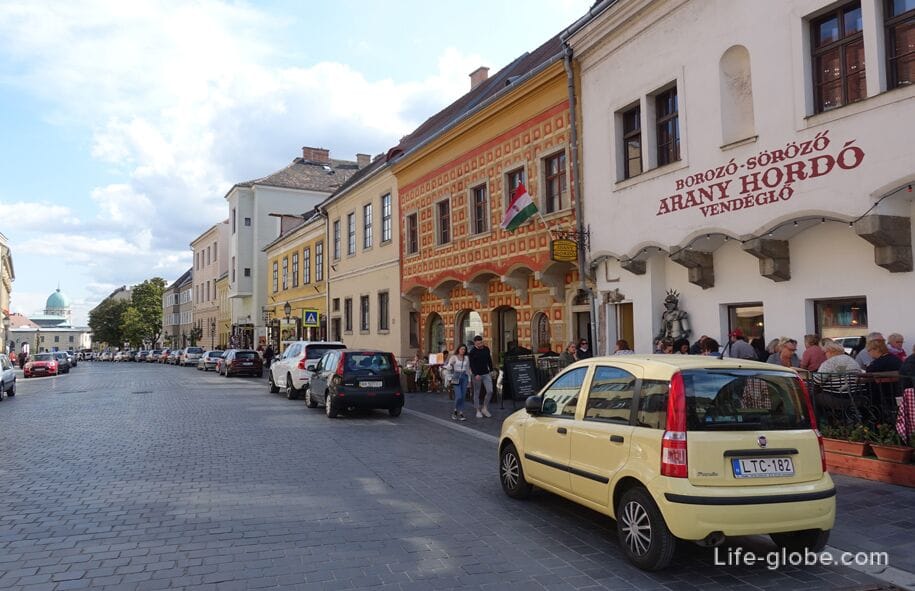
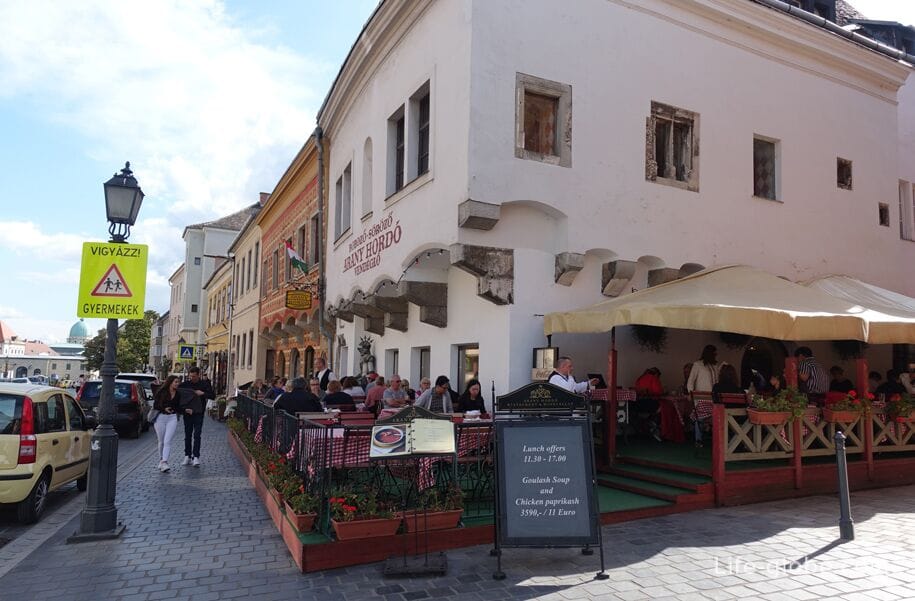
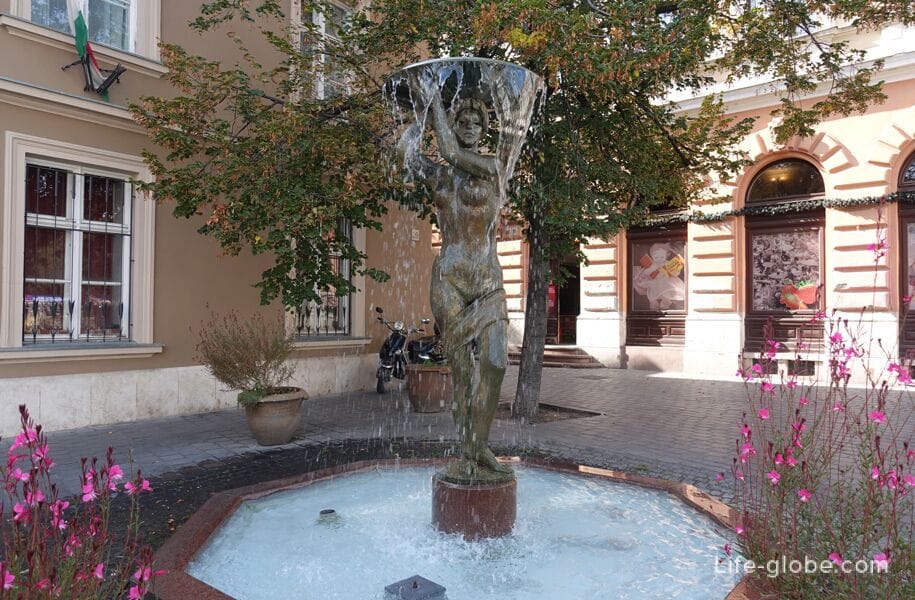

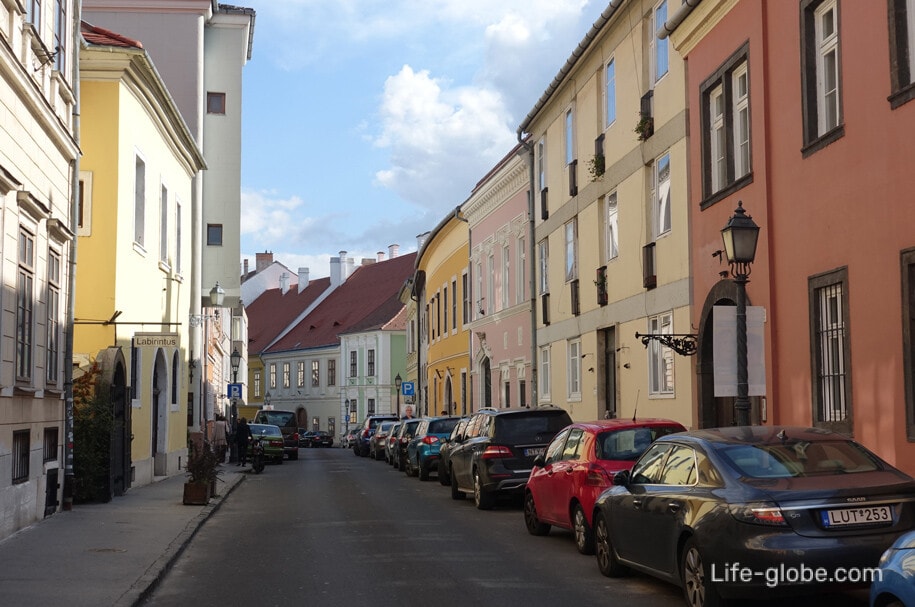
Notable:
- a monument to the "War for independence" (Honvéd-decent example);
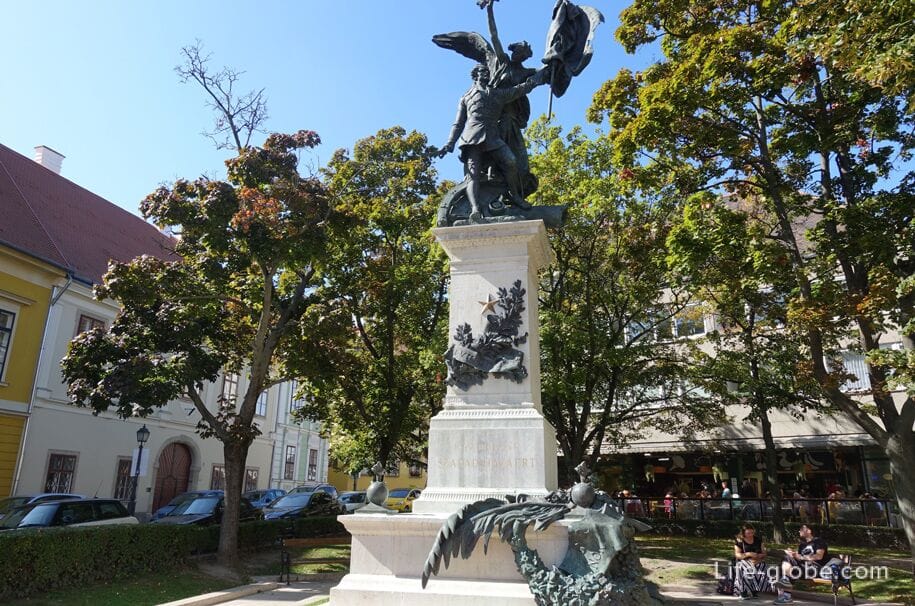
- Museum of pharmacy "Golden eagle" (Arany Sas Patikamuzeum), located in a historic building where once was located the first pharmacy in Buda. The Museum acts as a permanent exhibition and changing (temporary) exhibitions.
The address of the Museum pharmacy: Tarnok u. 18.
Website pharmacy Museum: semmelweismuseum;
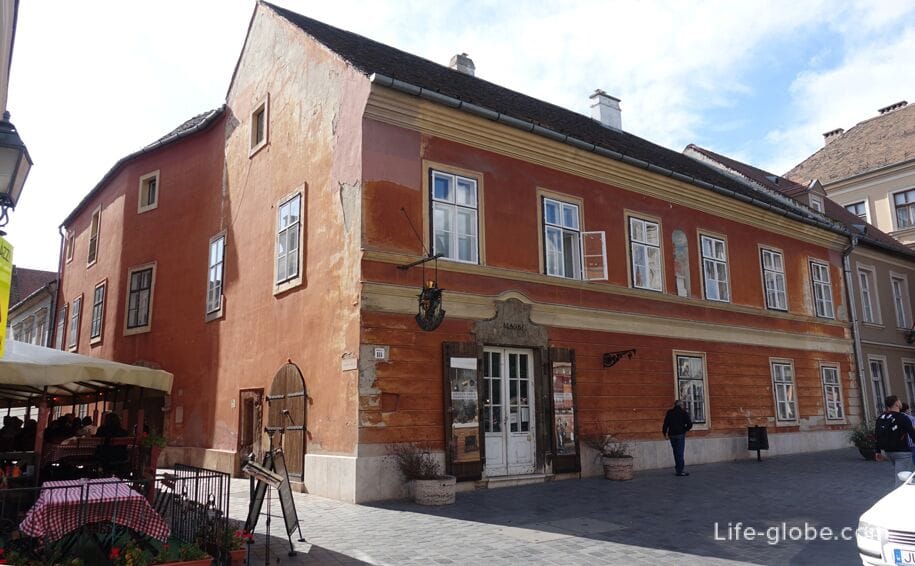
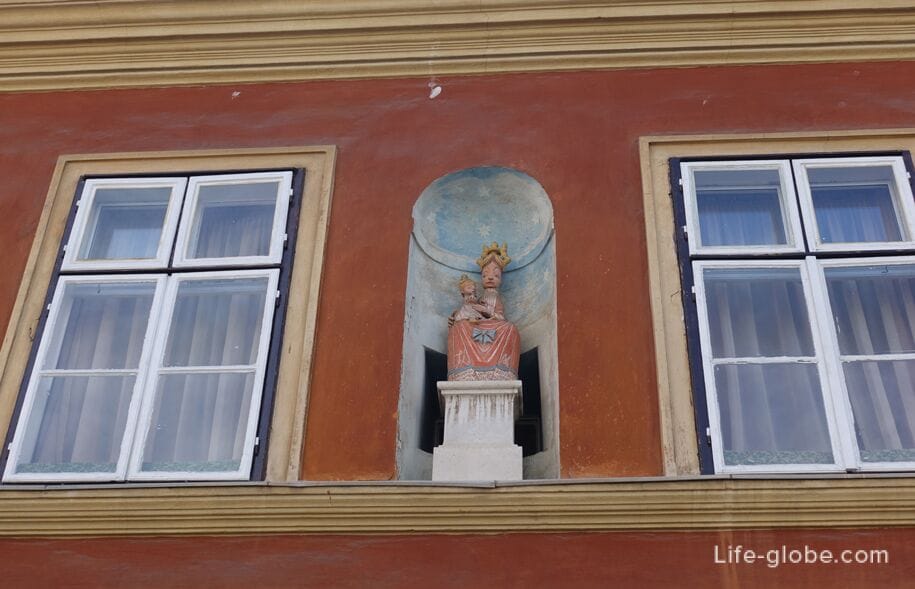
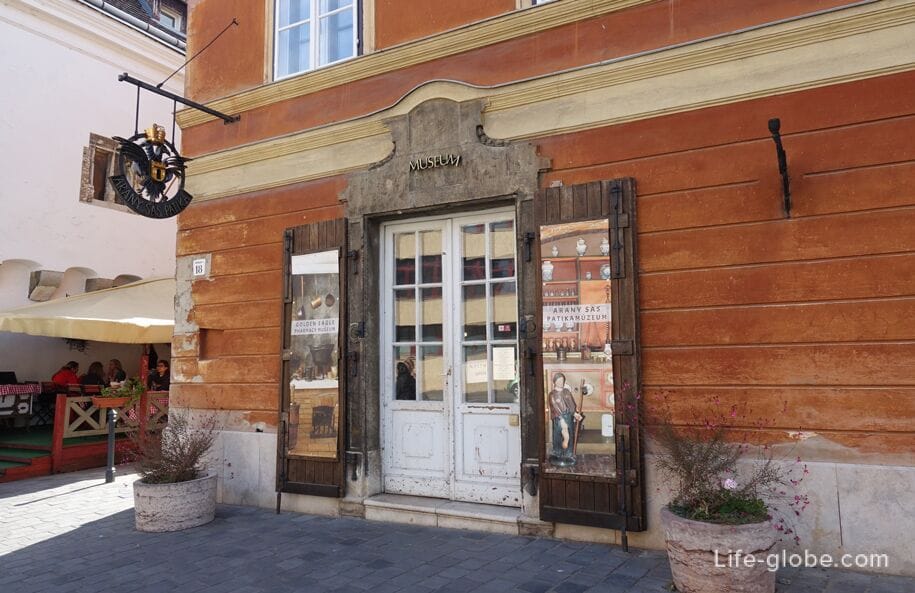
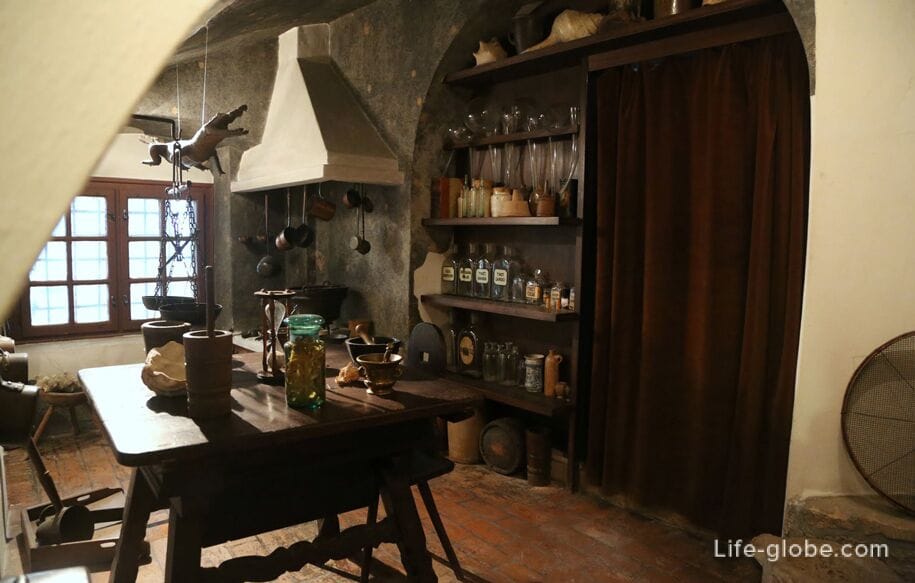
- Museum of the Labyrinth (Labirintus), located at Uri u. 9.
The labyrinth from the middle ages, somewhere in the 13th century, has been used for many purposes, including a former asylum, hospital and prison. In the middle ages the inhabitants of the castle were hidden in "Labyrinth" earned their wealth from tax collectors.
In fact, the dungeon is a natural cave with a high degree of protection, the system of passes which has already half a million years. Since the 20th century, the villagers began to link the cave passages in the mountain, therefore, in peacetime, the cave became a functioning wine cellar and was used as a refuge in time of war. With 30 years Maze is a tourist attraction. Was a refuge during the Second world war. And from 1984 to 1996 in the cave was first PANOPTICON in Hungary. The maze was closed from 1997 to 2011, and again began to welcome guests since November 2011.
Currently, in the winding corridors and vaulted halls of the underground Labyrinth, you can see Gothic and Renaissance stone monuments and Turkish tombstones. Exhibits.
The website of the Labyrinth: labirintus.
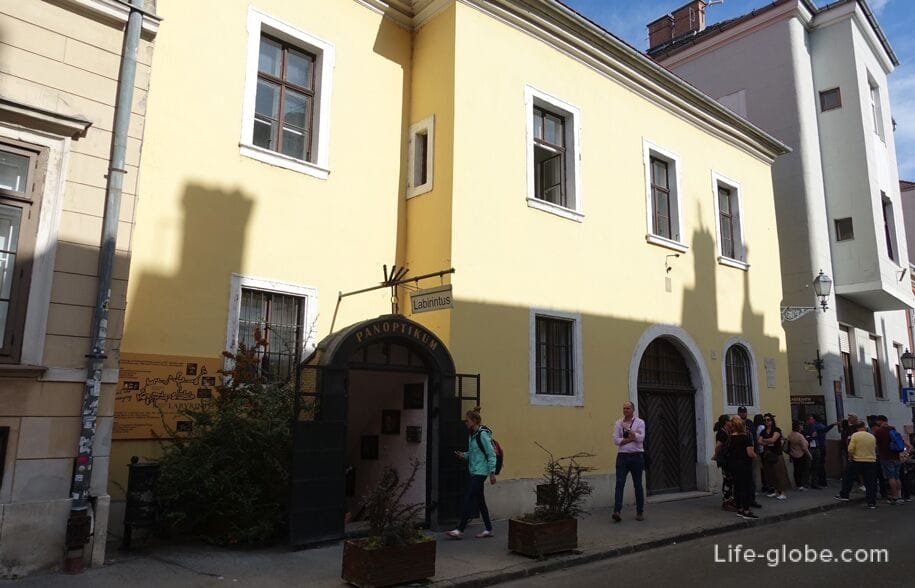
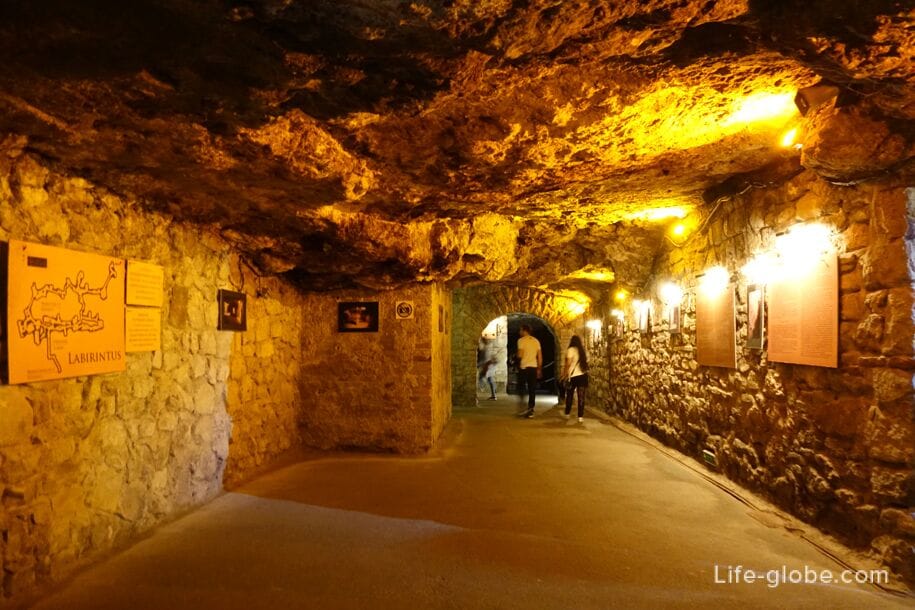

The equestrian statue dedicated to the famous Hungarian hussars, called the hussar among all hussars, Andres the Hadika (Statue of Andras Hadik) was established in 1937 in the historical part of Buda, with the aim reminders about the cult of the Hungarian hussars.
The statue is located on the pedestal, and Andras Hadika is depicted proudly sitting on horseback in military uniform.
According to legend, touching and stroking of the testicles of the horse brings good luck.
The statue is located at the intersection of URI (Uri) and Trinity (Szentharomsag).
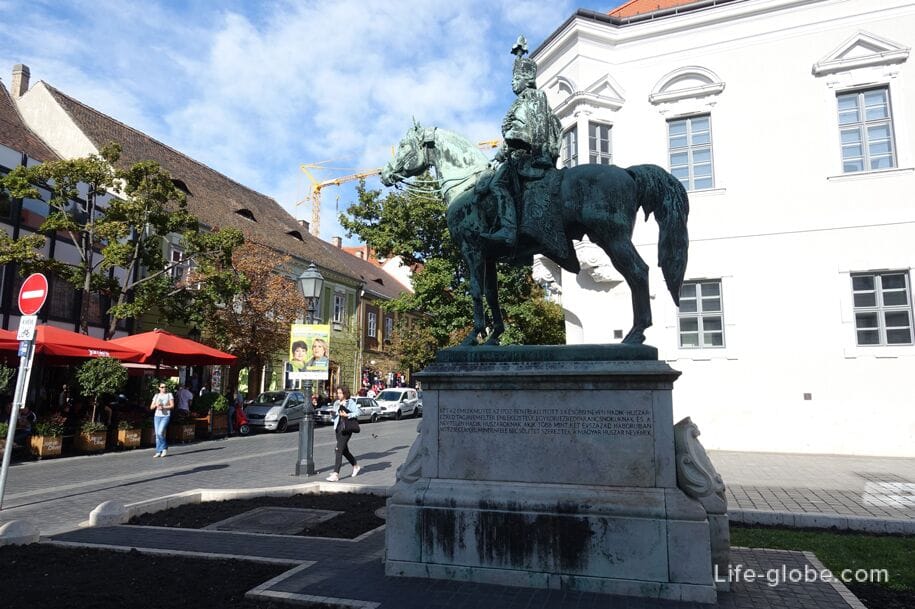
If from the monument of Andres Hadika pass on the street Trinity, along which are also historical buildings, cafes, shops and restaurants, we go to one of the oldest and perhaps the most beautiful, famous and most visited square in the Buda castle - the square of the Holy Trinity.
Photo street Trinity
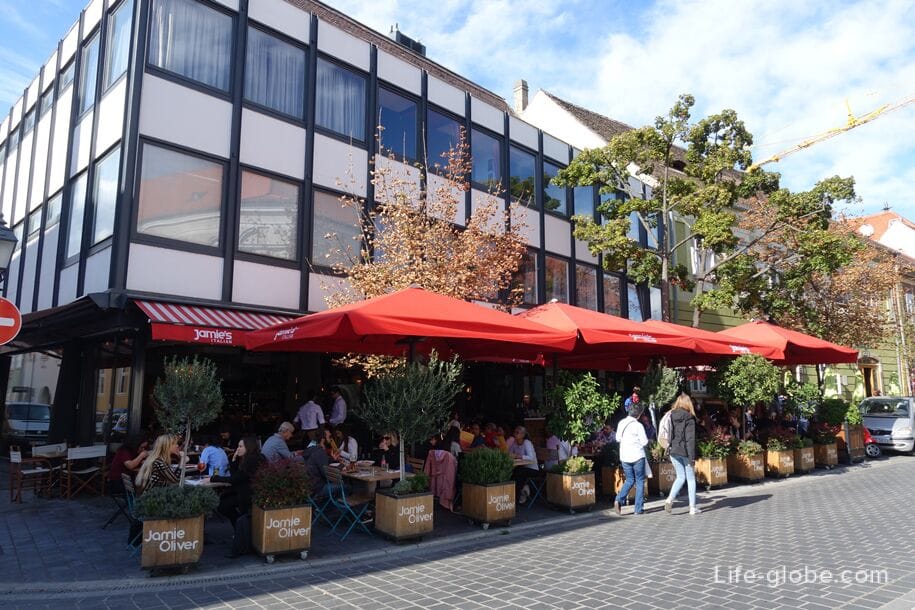
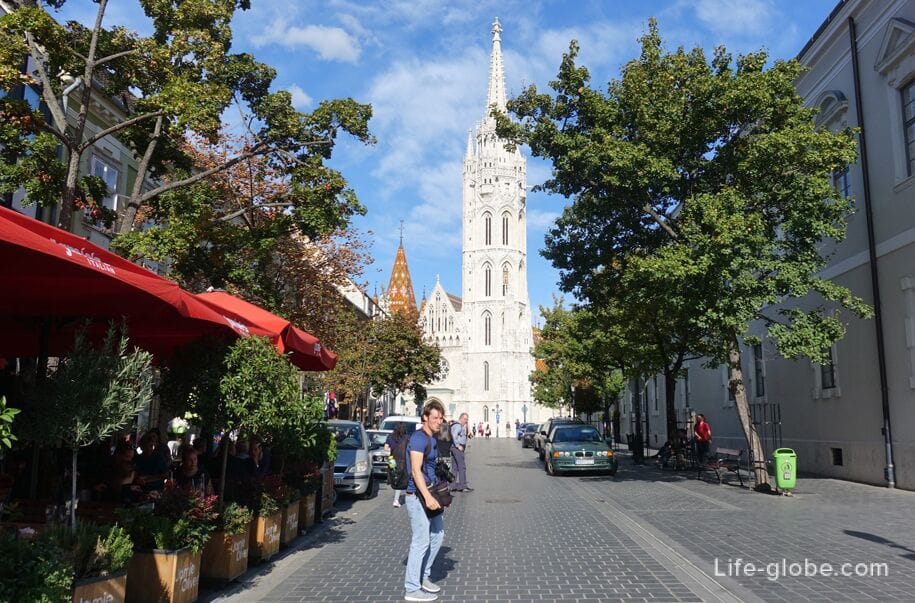
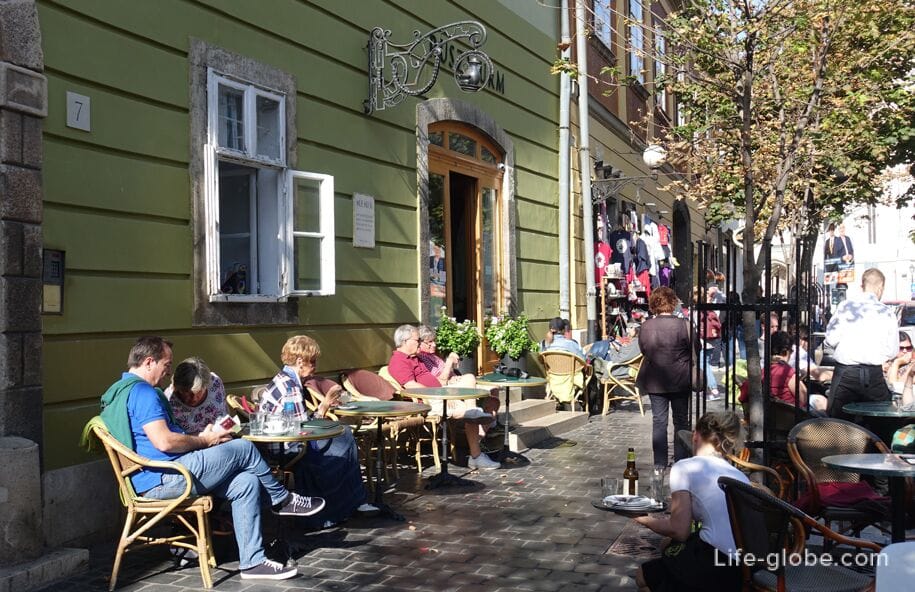
Today's square of the Holy Trinity or Trinity square (Szentharomsag ter), which is formed around the Matthias Church, there is space where in the middle ages stood a group of buildings with streets and alleys, but later most of the buildings on the square were demolished and destroyed houses were not rebuilt.
Currently, the square is the heart and center of the Buda castle.
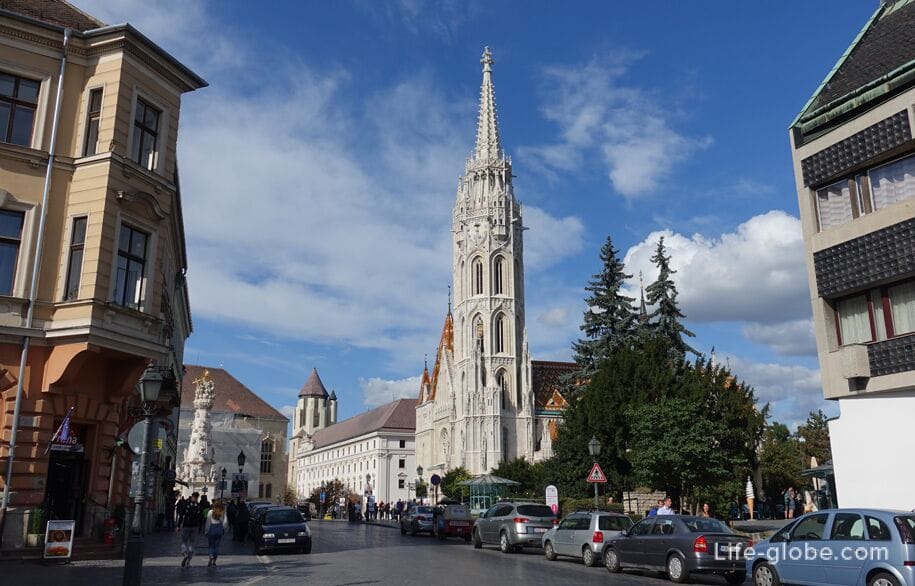
Attractions the square of the Holy Trinity:
- the old town hall of Buda (budai varoshaza Regi), which has a historical two-storey building in the Baroque style.
More than 160 years, this building was administrative centre of the city of Buda.
The long facades of the old town hall occupies an entire block and runs along Trinity street. On both corners of the building are closed balconies supported by decorated brackets.
On the Eastern façade is remarkable clock tower and on the corner facing Trinity square, in recessed in the wall niche placed a statue of Pallas Athena, the shield is decorated with the emblem of the city of Buda;
View of the Eastern facade of the town hall of Buda, the square of the Holy Trinity
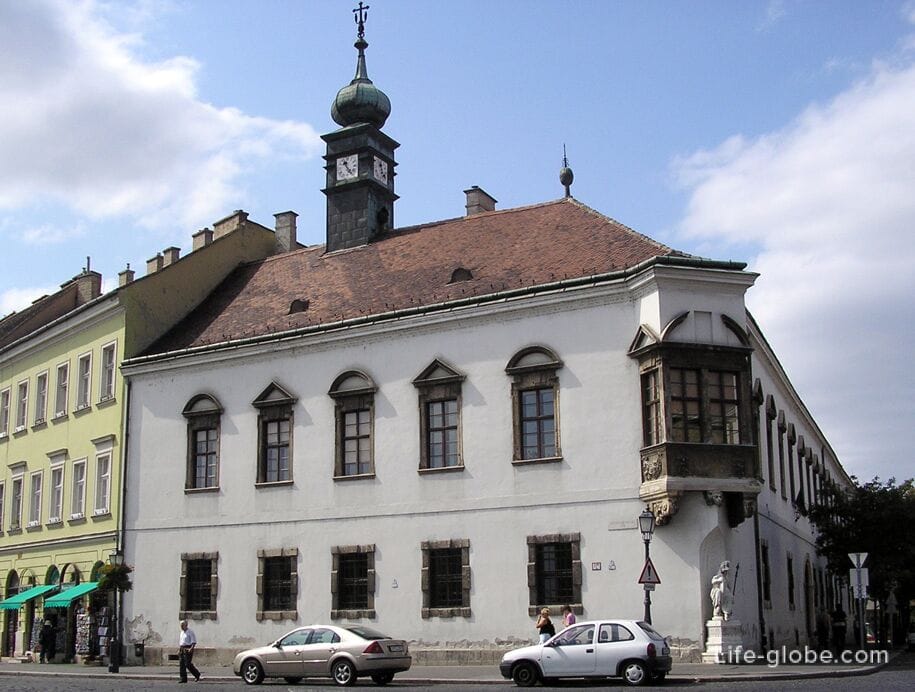
View of the Western facade of the town hall of Buda, near the statue of Andras Hadika
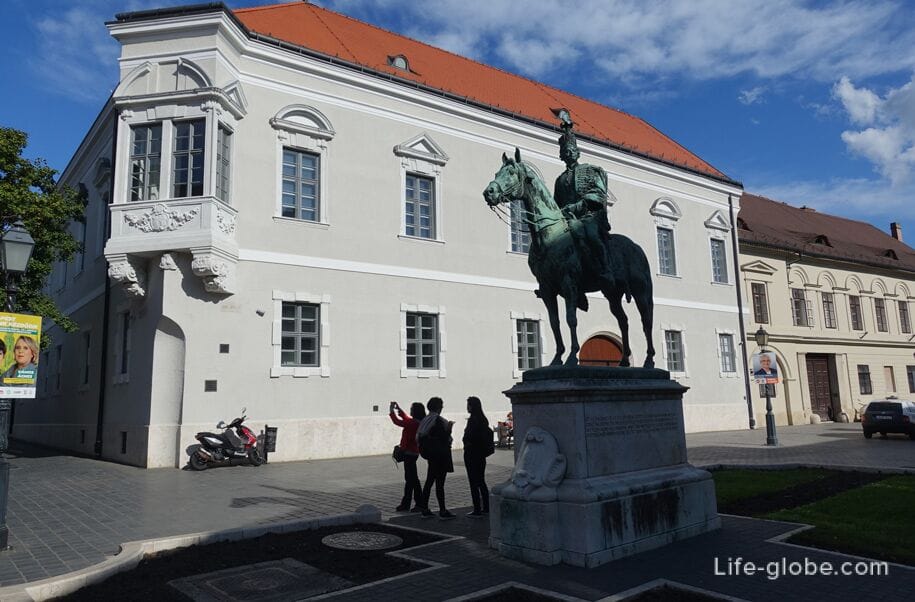
- the Holy Trinity column (Szentharomsag-decent example) located in the center of the square, in front of the main entrance to the Matthias Church and is dedicated to the memory of the people of Buda, the dead of two outbreaks of the Black plague.
The first stone of the column was laid in 1700, but, despite the fact that the first convoy was ready to 1706, three years later the plague returned to Budapest and, therefore, it was planned the construction of a new, larger column "Plague" to prevent the plague at any cost. People believed that the statue of the Holy Trinity in the form of high column served its purpose, as the plague never returned after 1709;
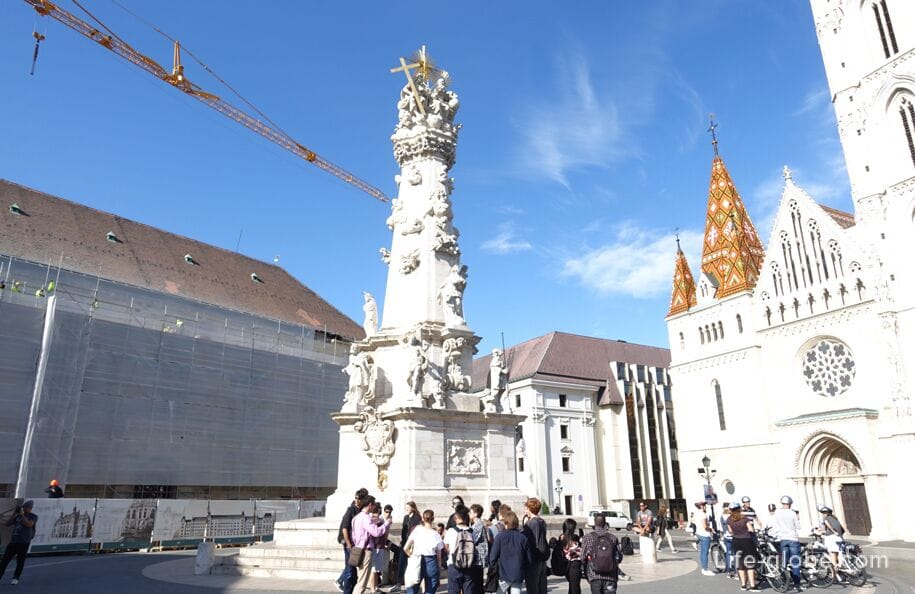
View of the Holy Trinity column and Matthias Church
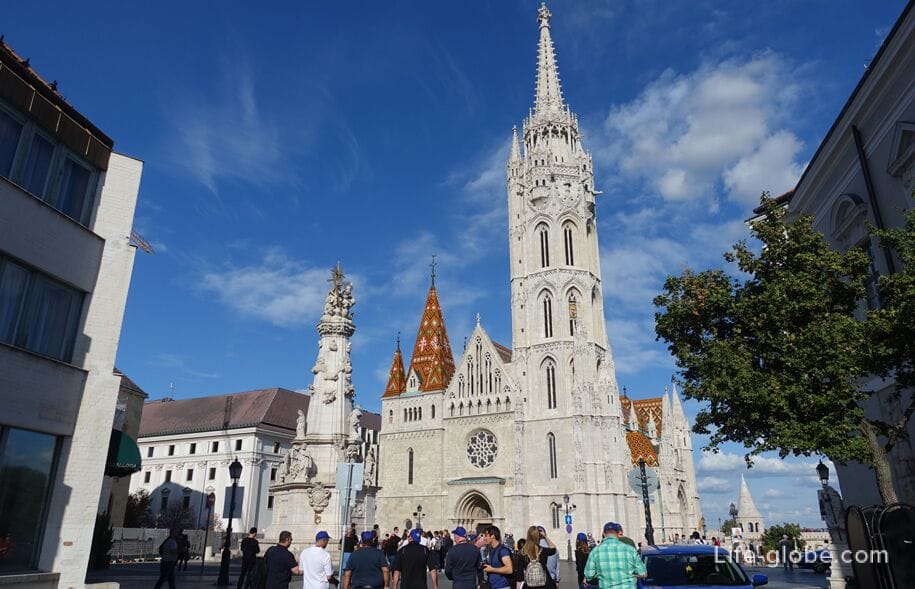
- Matthias Church or Church of St. Matthias, also known as the Church of the mother of God, at least - the Buda Church (Matyas Templom) - the Roman Catholic Church has a rich historical past and is one of the most important churches in Budapest, the second - St. Stephen's Basilica in the historic district of pest.
According to the tradition of the Church, the Matthias Church was founded by the Holy king Stephen (istván), built in 1015 in Romanesque style and consecrated in honor of the virgin Mary. This Church was destroyed during the Mongol invasion of 1241-1242 years. In the second half of the 13th century king of Hungary Bela IV ordered the restoration of the Church, but of larger size.
The current Church building in the late Gothic style in the second half of the 14th century (the reconstruction of the Church of the 13th century), and then at the end of the 19th century was carried out another extensive renovation and restoration. In those days it was the second largest Church of medieval Buda and the seventh largest Church of medieval Hungarian Kingdom.

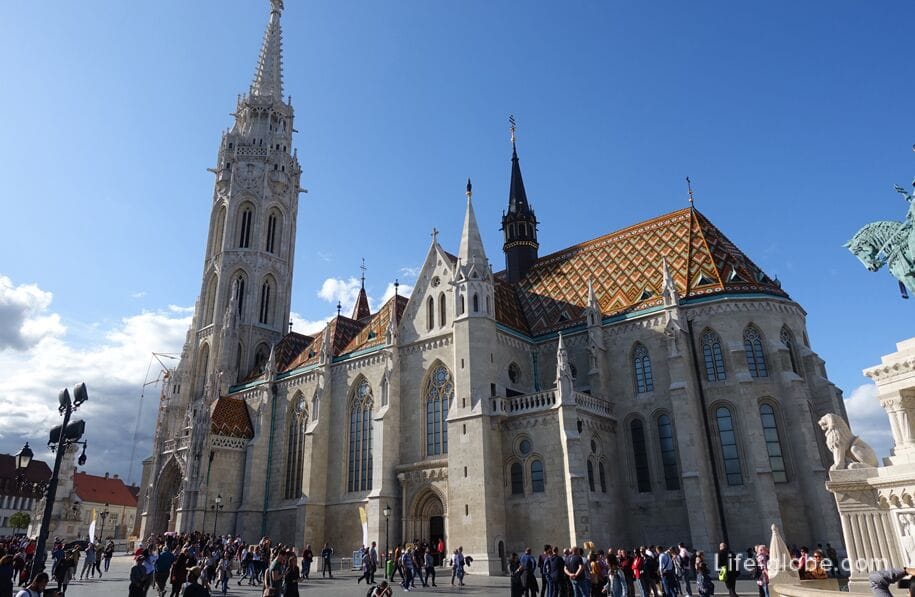
Almost the entire interior of the Matthias Church was established in the late 19th century, during the large-scale reconstruction and recovery.
The Prime jewels of the interior of the Church are: the pulpit of Sandstone whose surface is completely covered with Romanesque ornamental paintings, including statues of the main altar; stained glass Windows and wall paintings made by Hungarian artists LatAm K. and B. C. K.
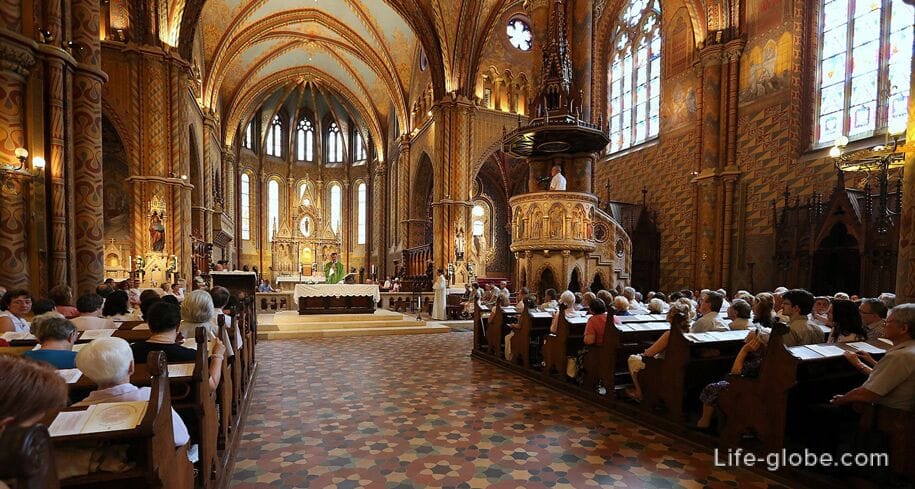
In the walls of the Church a Museum of religious art, which leads to the medieval crypt. The gallery contains a number of sacred relics and medieval stone inscriptions as well as copies of the Hungarian Royal crown and coronation jewels.
In the lower canopy of the bell tower, with a height of 46.73 meters and has access from the 197 steps, you can climb, there is an observation deck.
The entrance to the Church Museum and to the tower is paid. The cost of tickets and opening hours of the Church recommend to check with the website: matyas-templom.
Read more about Matthias Church...
- a monument - a bronze equestrian statue, dedicated to Saint Stephen I (Szent Istvan szobra), established in 1906 and located near the South-Eastern corner of the Matthias Church;

- Fisherman's Bastion (Fisherman's Bastion, the Hungarian name - Halaszbastya), thanks to spectacular architecture and panoramic views of the Danube river and the historical area of pest, is one of the most visited and memorable sights of Budapest.
Fisherman's Bastion was built between 1895 and 1902 the years, on a site partially destroyed at the time of the fortification walls in neo-Romanesque style by architect Friesem Solely, who was also responsible for the reconstruction of the Matthias Church.
Currently, the Fisherman's Bastion is a decorated section of the former wall, a length of about 140 meters with seven high towers, representing the seven Hungarian leaders - leaders of the Magyar tribes, who founded the current country in 895.
The towers of the Bastion are connected by passages, arcades and balustrades.
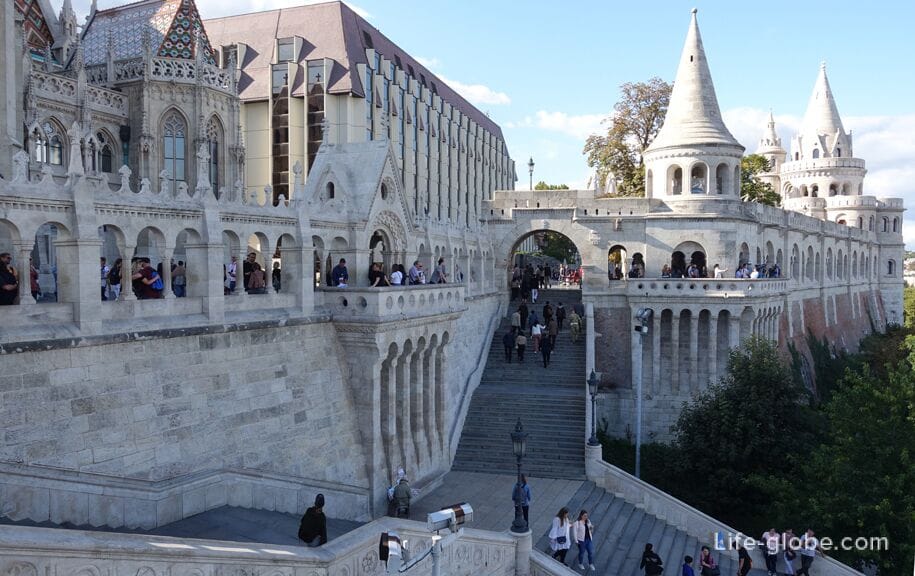

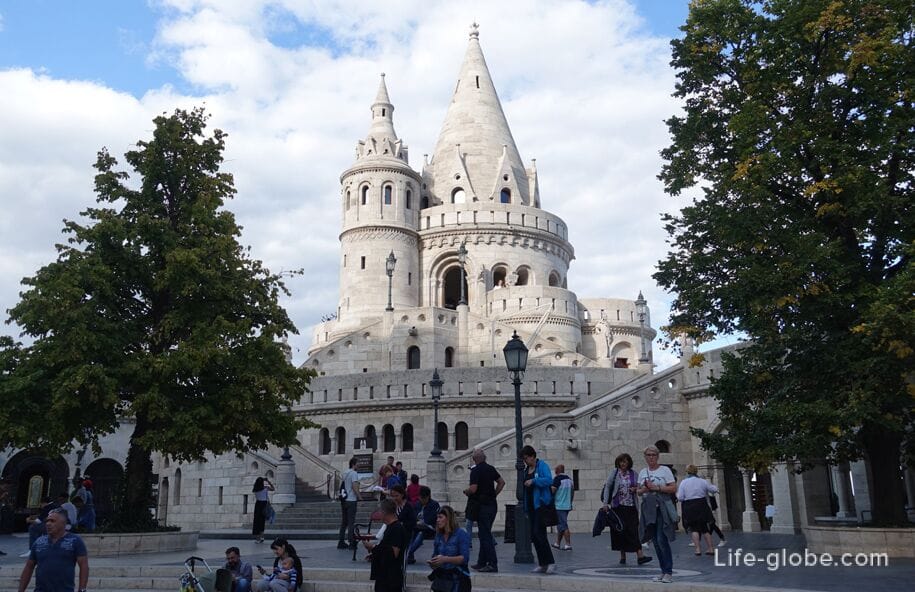
The species opening with the Fisherman's Bastion
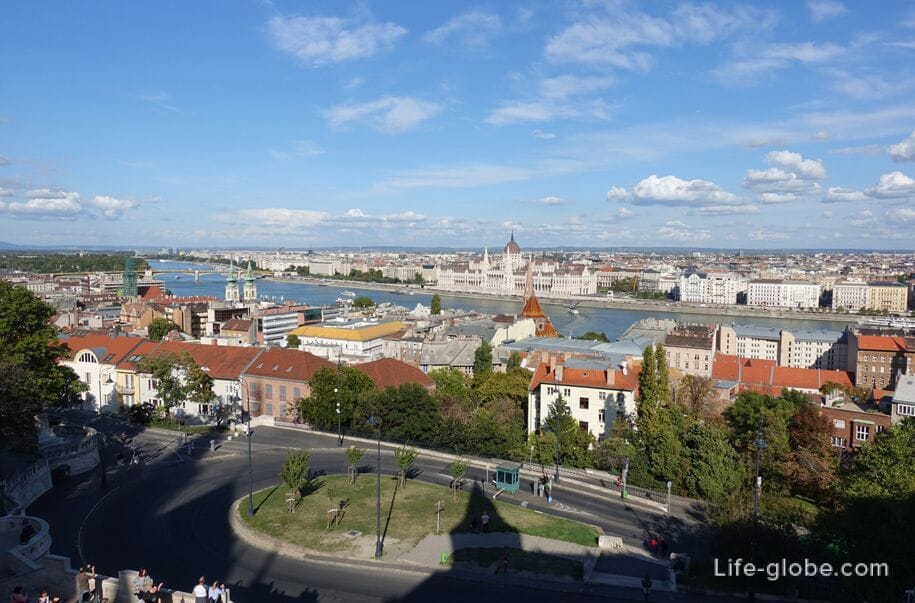

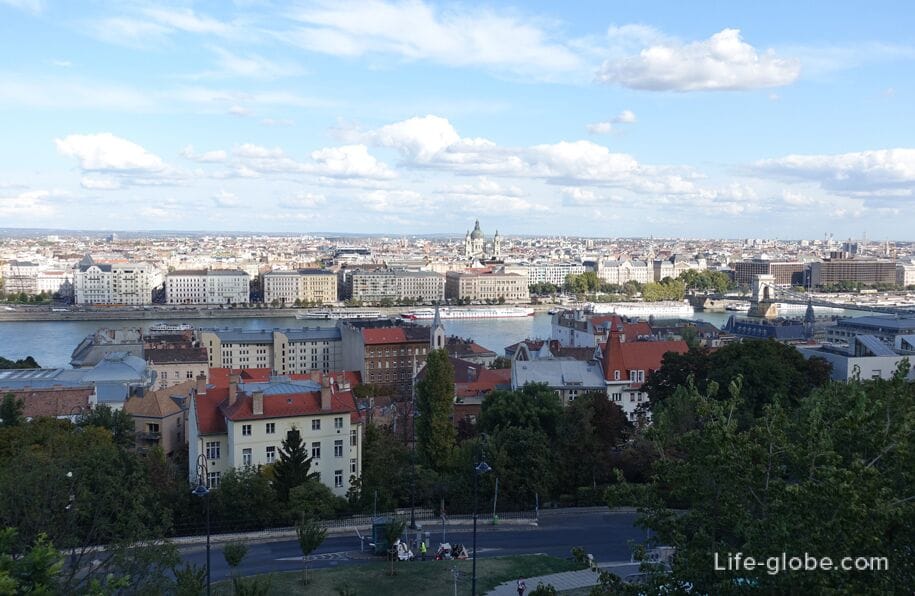
In the high tourist season (from March 16 to April 30: from 9:00 to 19:00 hours and from 1 may to 15 October: from 9:00 to 20:00 hours) access to the top floor of the Fisherman's Bastion and towers are paid. The cost of a full ticket is 1 000 HUF. On the national holiday, 20 August, admission is free.
Attention! Watch paid visits part of the Bastion, and the cost of tickets may vary, please check the information before visiting on the website.
Read more about Fisherman's Bastion...
- the chapel of St. Michael.
As the researchers suggest, under the Buda hills, on which stands the Bastion is the whole complex of the Buda castle, padded multi-kilometer network of tunnels and passages.
One of the possibilities to go underground is a visit to the chapel of St. Michael, which was accidentally discovered during the construction of the Fisherman's Bastion.
In the chapel there is a small exposition dedicated to the history of Hungary, and in the lower hall viewers are invited to watch a 14-minute multilingual 3D film is devoted to 1000-year history of Hungary.
The entrance to the chapel is from the southern part of the Bastion, near the side stairs and the third tower.
The cost of tickets and visiting hours can be found on the website.

Now on the remains of the monastery and the Church of St. Nicholas (Szent Miklos domonkos kolostor), built in 1254 built 5-star Hilton Budapest.
From the monastery you can see now only a very small part of it:
the ruins of the hotel, close past the North tower of the Fisherman's Bastion, in a horseshoe-shaped apse of the garden of the former Dominican Church.
The ruins is a statue of a monk Julian and Gerhardus, work karolyi Antal, 1937. The monument depicted Julian and Gerhardus, are on the order of Andrew II went in search of the remaining Hungarians in the Ancient Homeland;
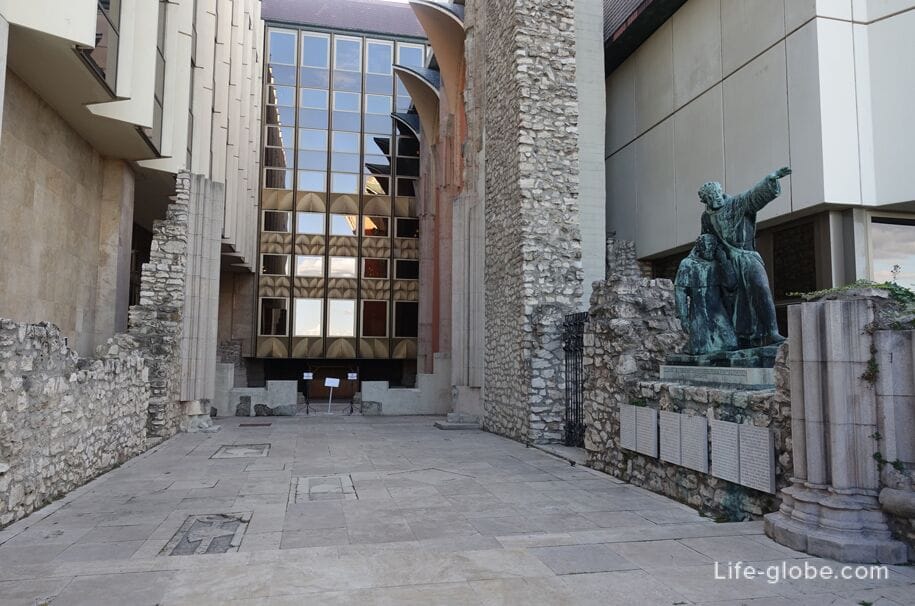
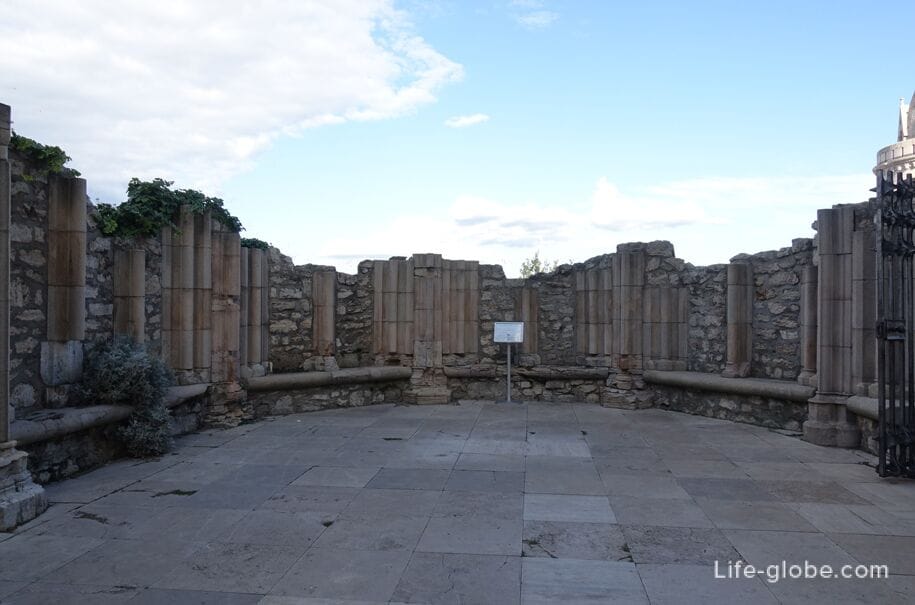
- renovated Nikolaev tower of the monastery, to see it from the side of the Hilton hotel, the square, Hess Andras (Hess Andras ter).
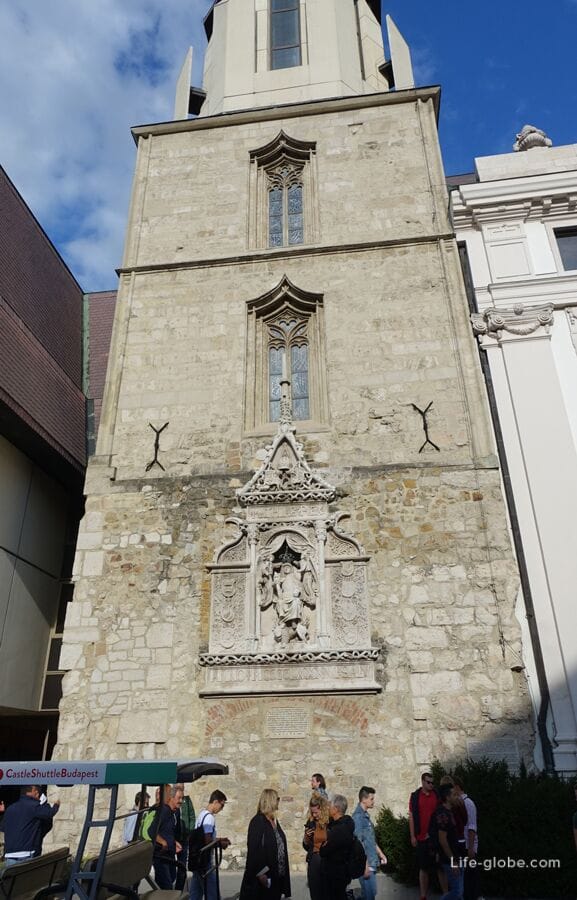
Photos of hotel Hilton
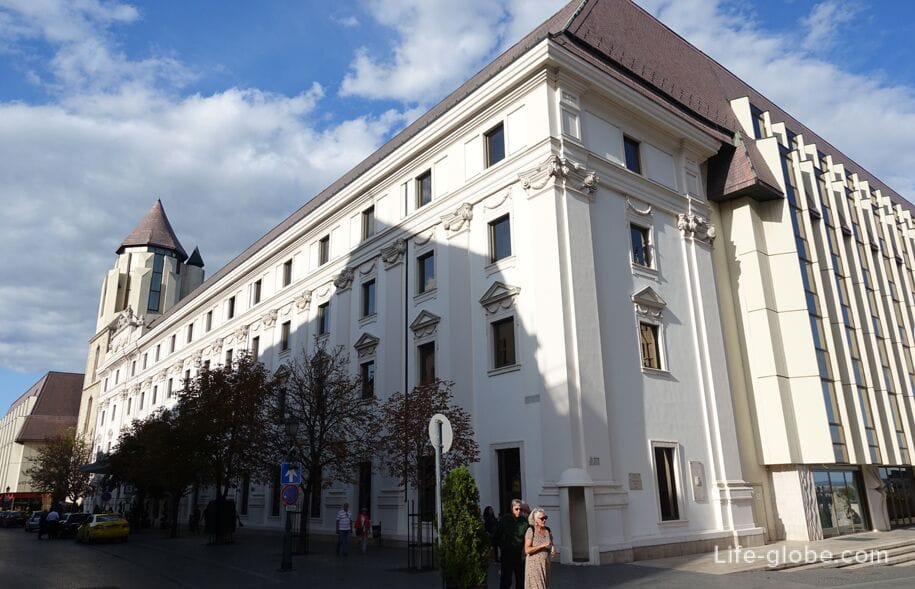
Photos of the area HES Andras

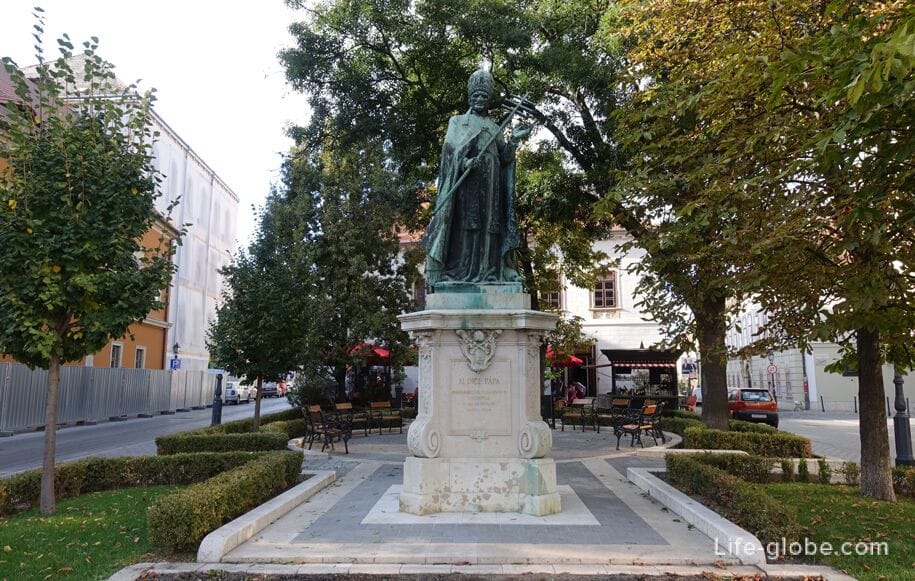
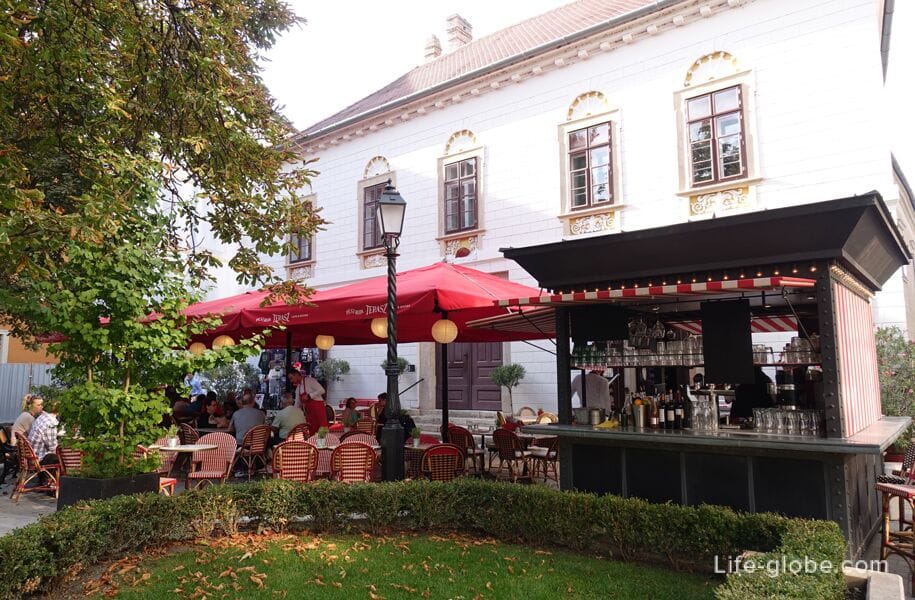
Streets of the Castle district, which runs from the square of the Holy Trinity and to the Northern boundary of the castle walls, also beautiful. Here are all of the same low colourful buildings, cafes and restaurants, squares and several museums.
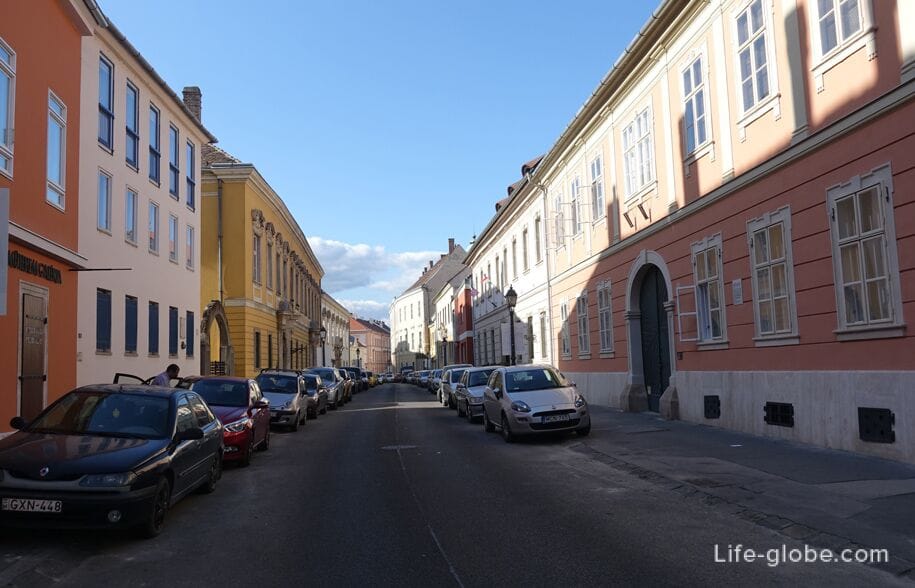
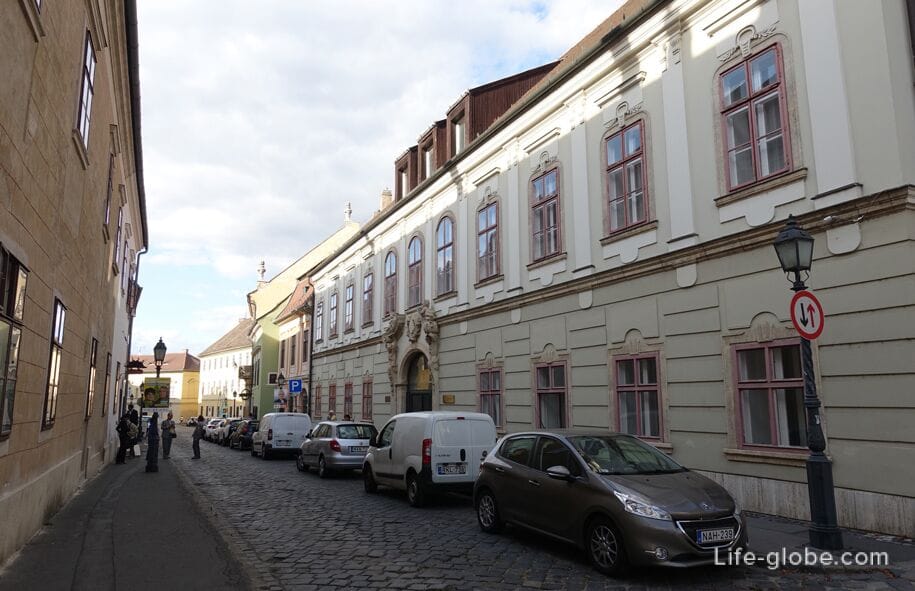

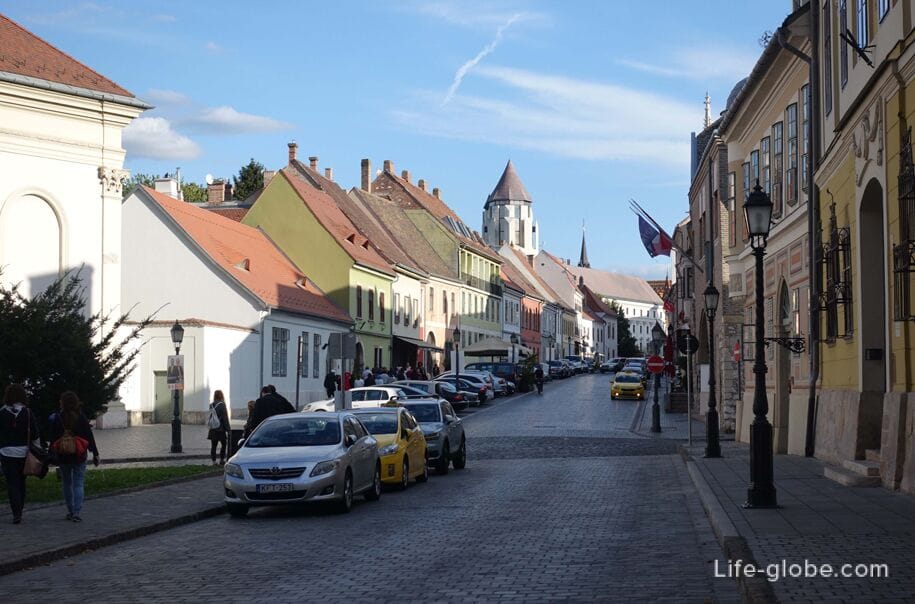
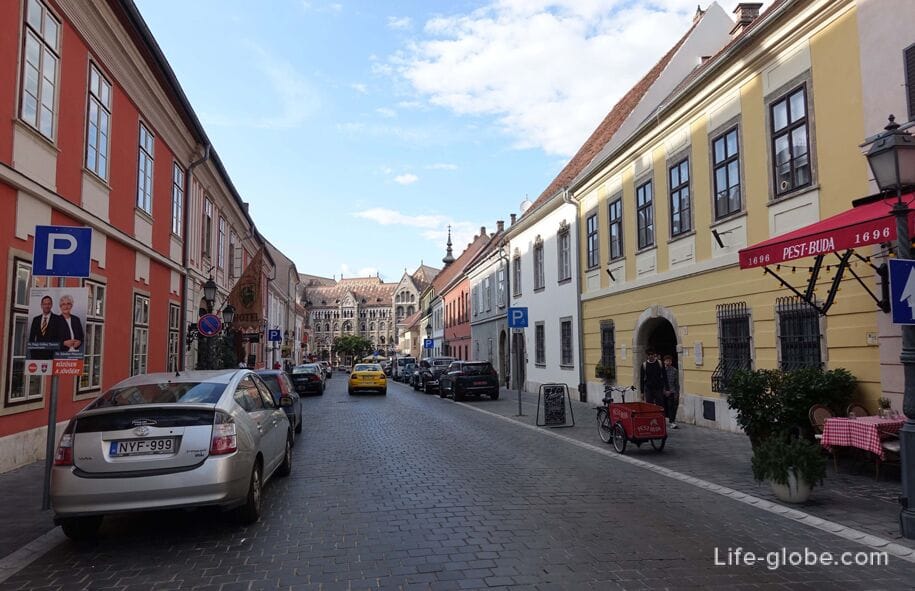
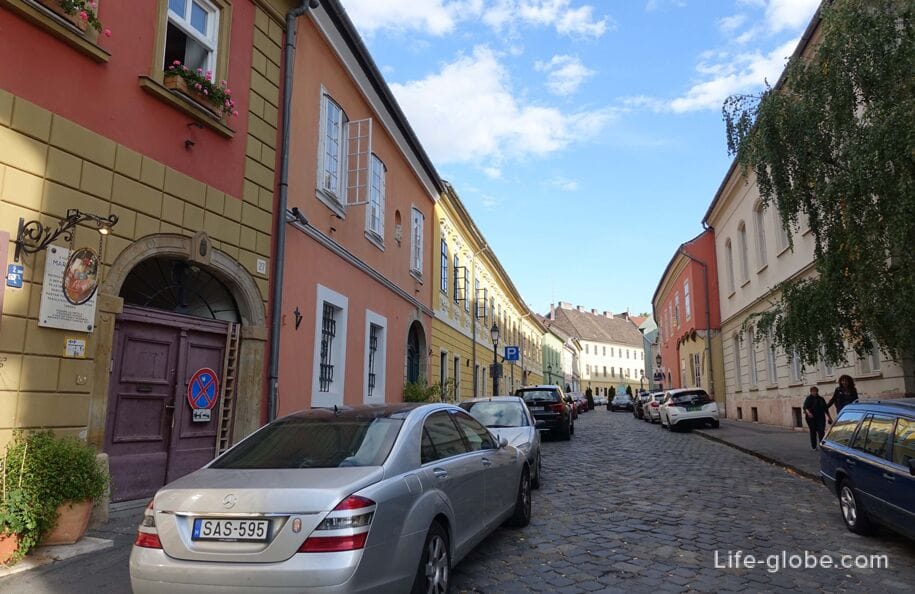

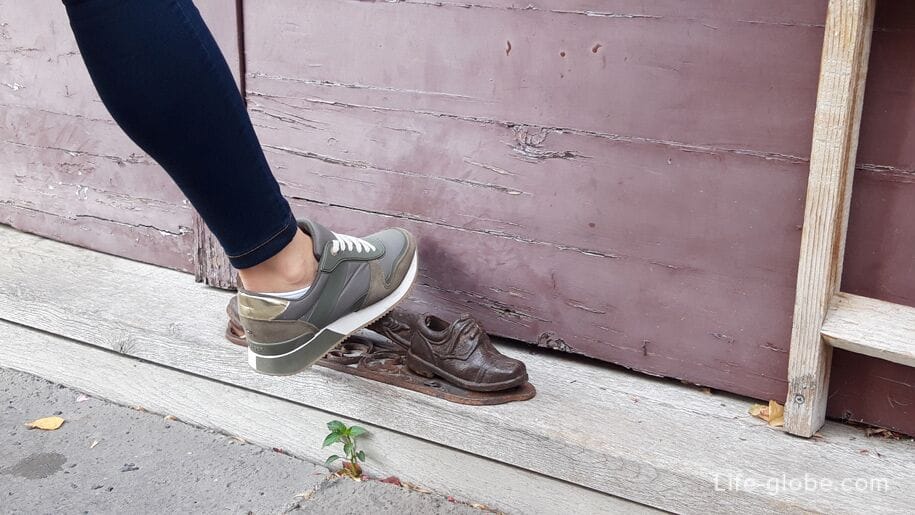
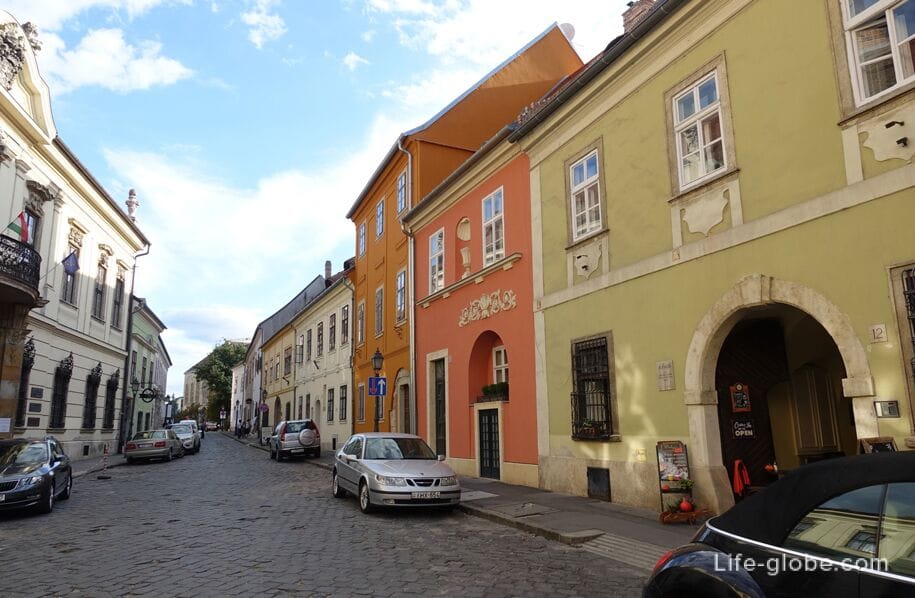
First Bastion (First Bastion) - protected heritage site, built in the 16th century Bastion of Transylvania (Transylvanian Bastion) and the associated walls of Buda castle, can be seen as a hidden fragment of history of Buda and Hungary in General.
Wall and pedestrian gate with a drawbridge at the foot of the walls of the castle lay under a huge pile of rubble for more than two hundred years.
During excavations of the castle Museum in 2018, was found objects and fragments that were put on additional exhibitions in two places, including in the Budapest historical Museum, where gold coins, Turkish coins and other finds.
Now the first Bastion represents the remains (archaeological sites), former fortifications, and an exhibition on unique fortress of Hungary and the Transylvanian Bastion excavations, including some archaeological finds.
Bastion is located at the address: Tancsics Mihaly u. 9. Site of the Bastion: varkertbazar.

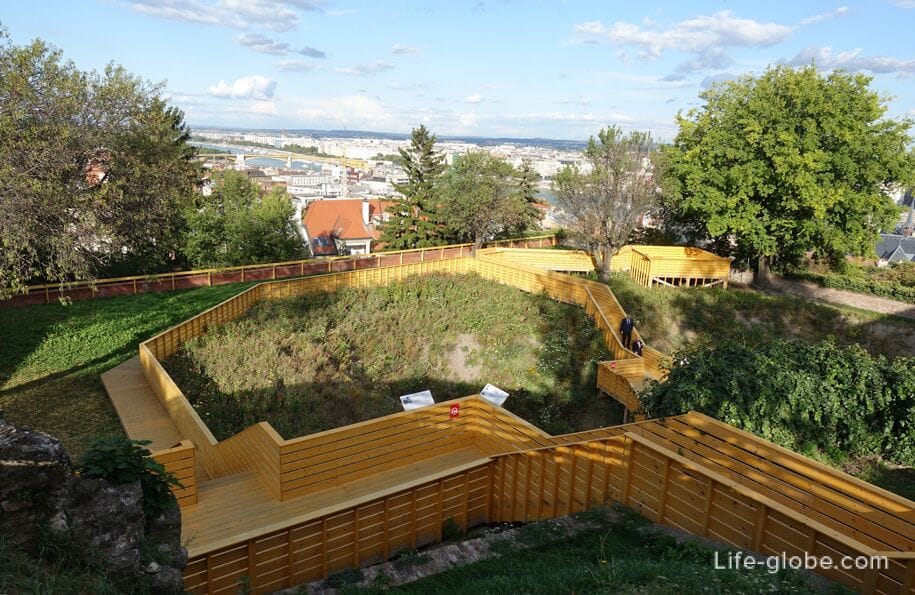
Vienna gate square or the square in front of the Vienna gate (Becsikapu ter) is a public space located in the North-Eastern corner of the Castle.
The sights of Vienna gate square:
- the building of the Hungarian national archives (Hungarian National Archives, Hungarian name Magyar Nemzeti Leveltar) whose history dates back to the middle ages.
Royal archive existed during the dynasty of Arpad, from the end of the 12th century and is constantly evolving. The construction of a separate archives building began in the fall of 1913 and lasted until 1920.
Exterior stone sculptures of the building were made by Ferenc Mikola. The rich interior decoration has been developed in accordance with the ideas of the Klebelsberg;
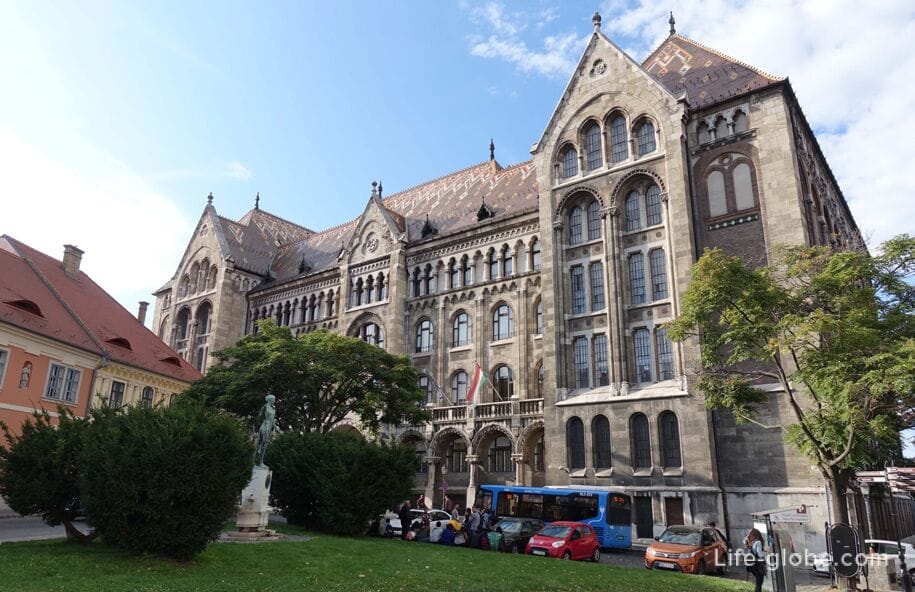

- memorial fountain, located near the building of the Hungarian national archive, the center of the square, the Vienna gate.

The fountain is notable historic buildings:
On a photo the first of three buildings - the house №№ 8, 7 and 6
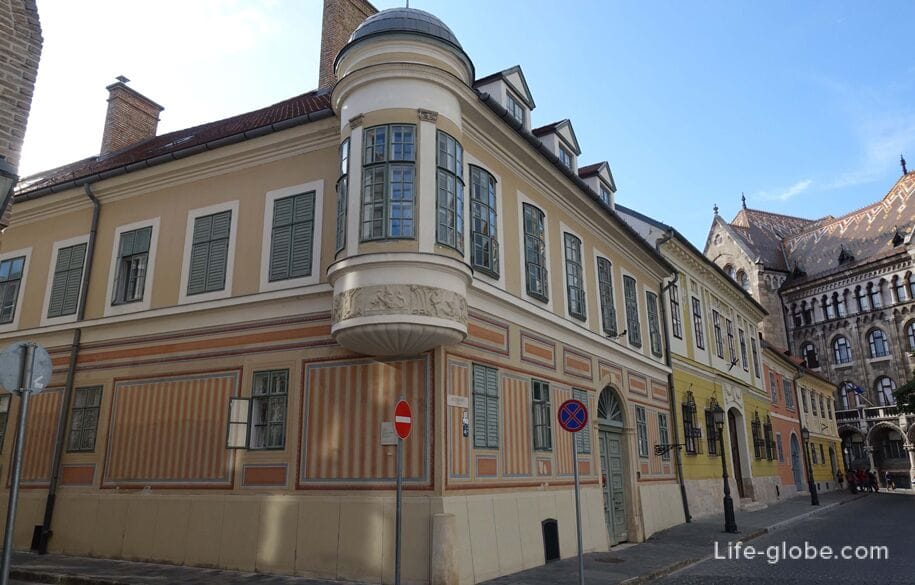
- Gates of Vienna (Vienna Gate, the Hungarian name Becsi kapu), in the middle ages, also referred to as "Saturday's gate" as the gate was held Saturday of the fair.
In the 19th century the gate was demolished and rebuilt in 1896. To mark the 250th anniversary of the liberation of Buda (1936) was completed on the current gate, which have more of a symbolic value and determine the northeastern boundary of the Buda castle.
Before the gates are installed automatic barriers designed to restrict the passage of vehicles, apart from buses, taxis and hotel guests with cars entering the territory of the former Buda castle.
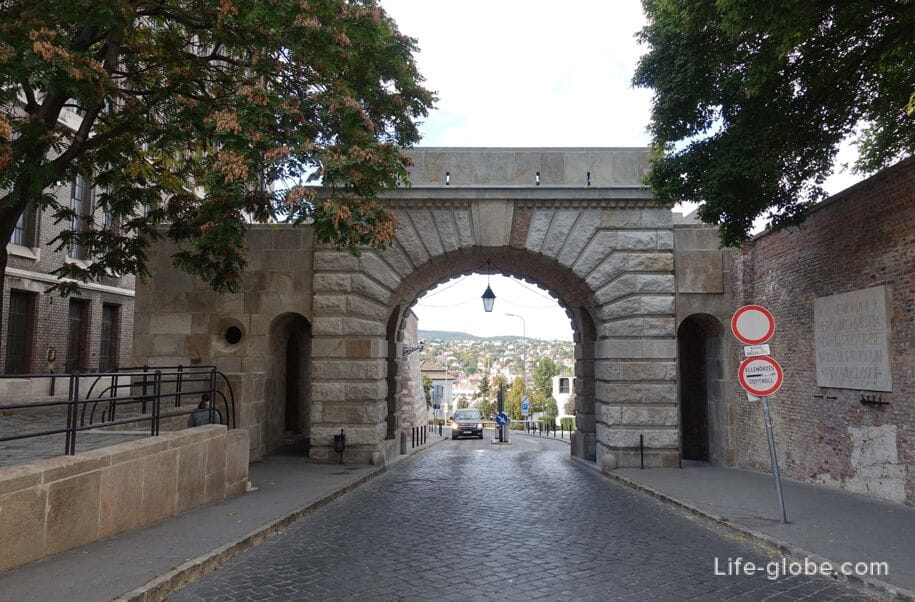
The Vienna gate you can climb. With gate, views of Vienna, a part of the district of Vizivaros (Vizivaros) and district Orszagot (Orszagut), located at the foot of the hill, the Buda castle;

- monument "repatriation Budavari" or angel statue (Angel Statue, Hungarian name Budavar visszavetelenek emlekműve), dedicated to the 250th anniversary of the liberation of Buda from Turkish rule, which is located near the internal structure of the Vienna gate and the East side facade of the building of Hungarian national archives;

- Lutheran Church Budavar (Budavari evangelikus templom), built in 1895 and was the first Church of the Lutheran community in Bude.
The facade of the Church facing the center of the square and in the style of neo-Baroque. The main portal is framed by two Corinthian columns. Square, slim and tall tower of the Shrine rises above the façade. Read more about square, the Vienna gate...
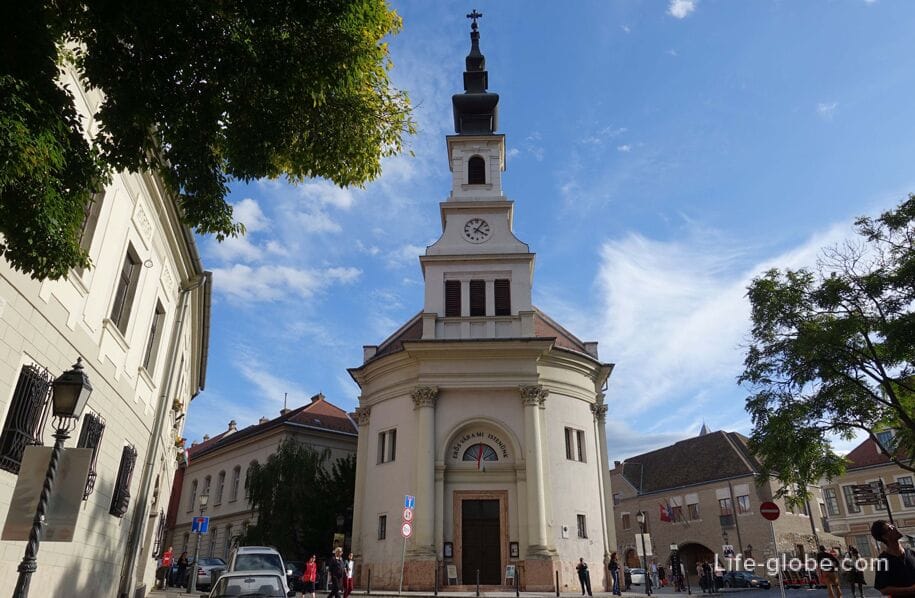
Kapitanskaya area (Kapisztran ter) located in the North-Western part of the Buda castle.
The square is notable: the building of the district of the municipality of Budapest district I and the military history Museum of the city (Military History Museum, the Hungarian name Hadtörténeti Múzeum), founded in 1918, the military history archive of Budapest. Near the building of the Museum houses military equipment and is a monument - a statue of John Capistrano (Kapisztran Janos decent example).
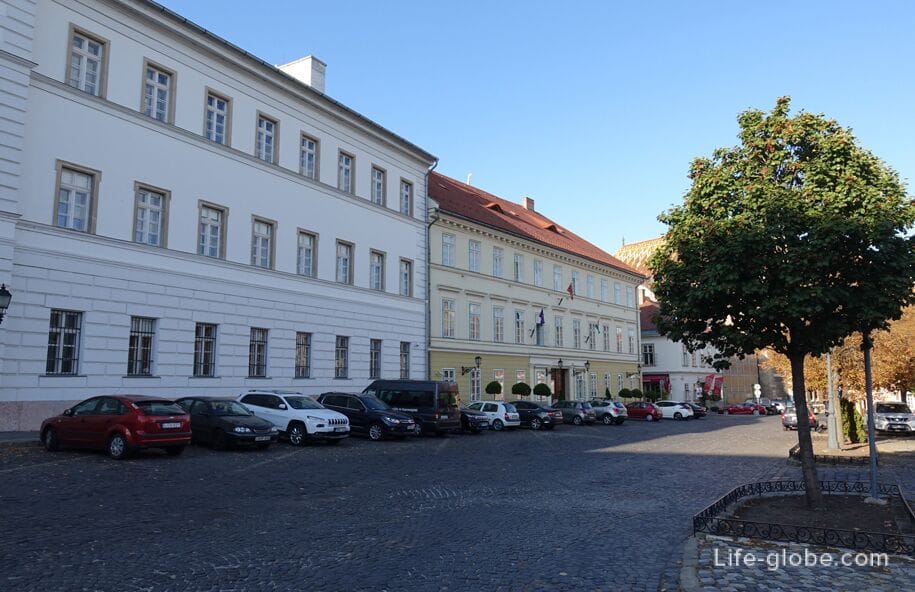

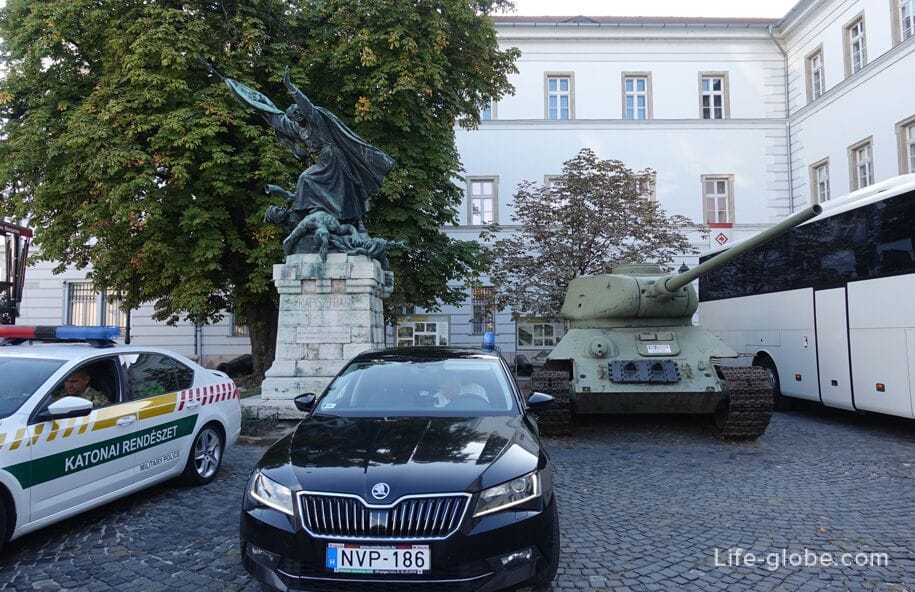
The main attraction Kopystyanskoy square stands the Mary Magdalene tower (Maria Magdolna Torony), also known as the tower of Buda/ Buda tower on the Buda tower (Buda tower), representing the tower of the Church of Mary Magdalene (Maria Magdolna-templom).
The Church of Mary Magdalene is one of the oldest churches of Budapest. It was built in the 13th century in the Gothic style in the Northern residential district of the Buda castle.
The Shrine was first nave, and then expanded (to 1400). The Gothic Church, according to the latest images, had a high bell tower of pyramidal shape.
The Church was destroyed during the siege of 1686 and was restored after the liberation in the 17th century in the Baroque style. Badly damaged during the battle in 1944. Its ruins were demolished during the Communist rule, leaving only the bell tower.
Today you can see the bell tower, restored ruins, located near the tower and installed on the ruins of a bronze copy of the 1000-year old Hungarian coronation mantle.
In the tower is a small exhibition telling about the history of the Buda castle and the Church of Mary Magdalene. From the top floor of the tower offers a panorama of the city.
Tower site of Mary Magdalene: budatower.
Read more about the tower of Mary Magdalene...
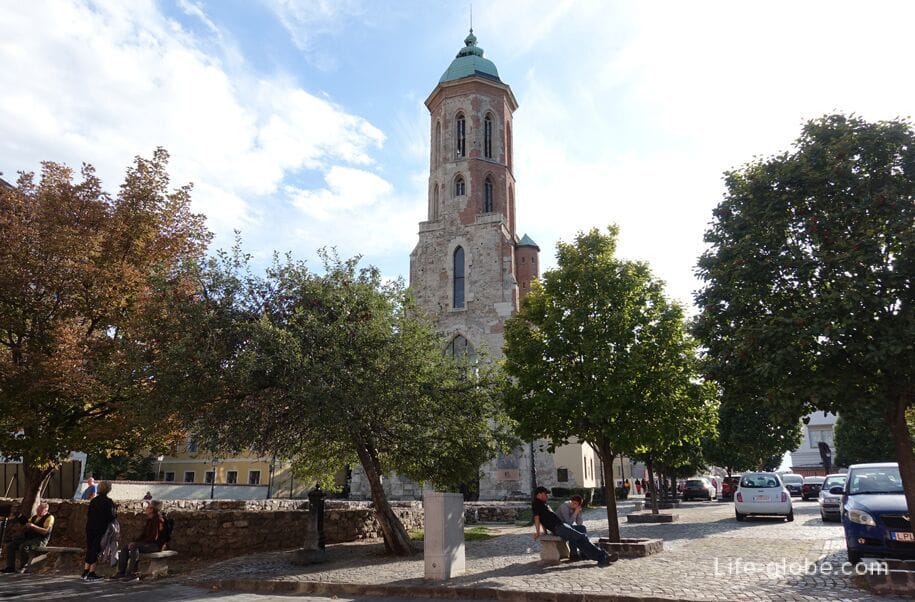
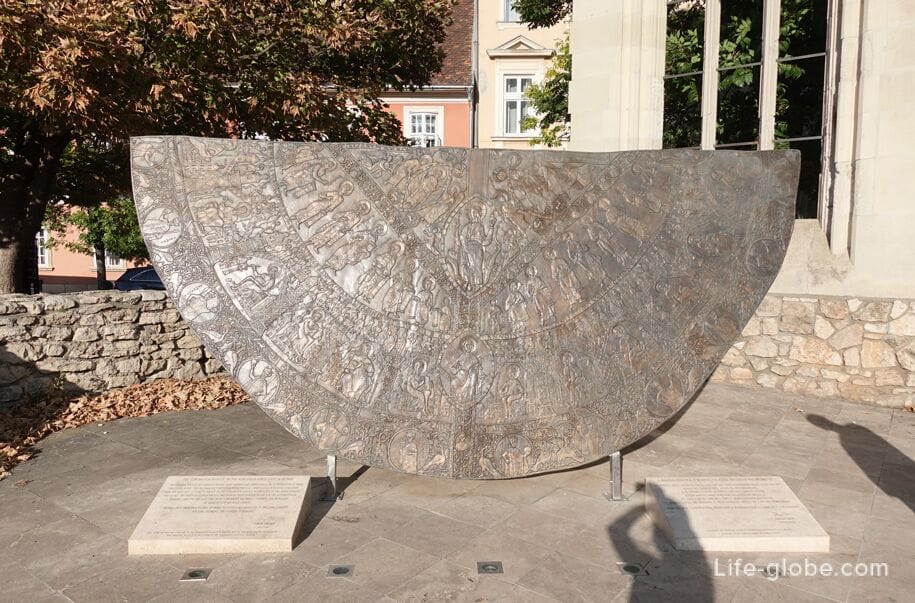
Along almost the entire Western ramparts of the Buda castle from St. George square to the North-West corner of the castle space, pedestrian street, walking along which you can admire panoramic views of the Western part of Buda and the gellért hill.

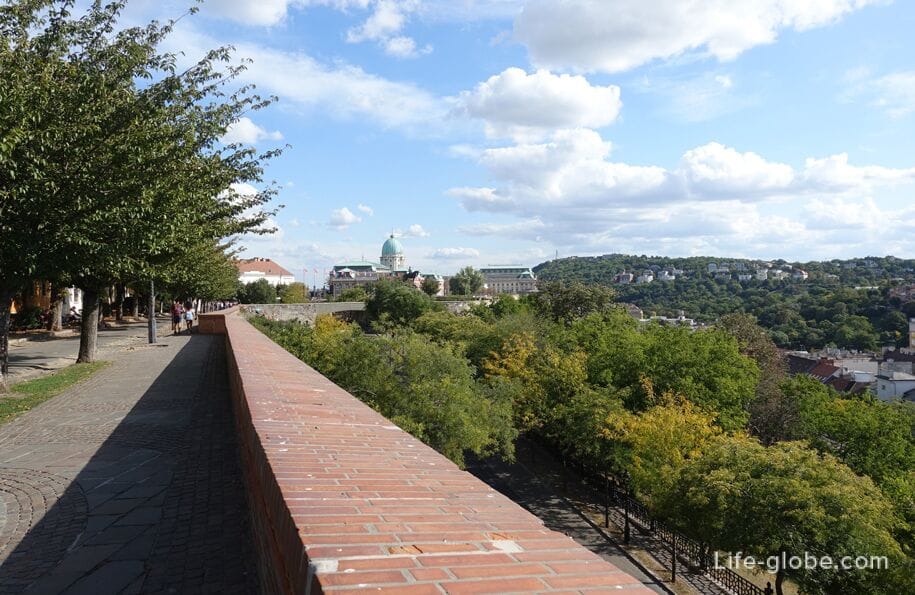
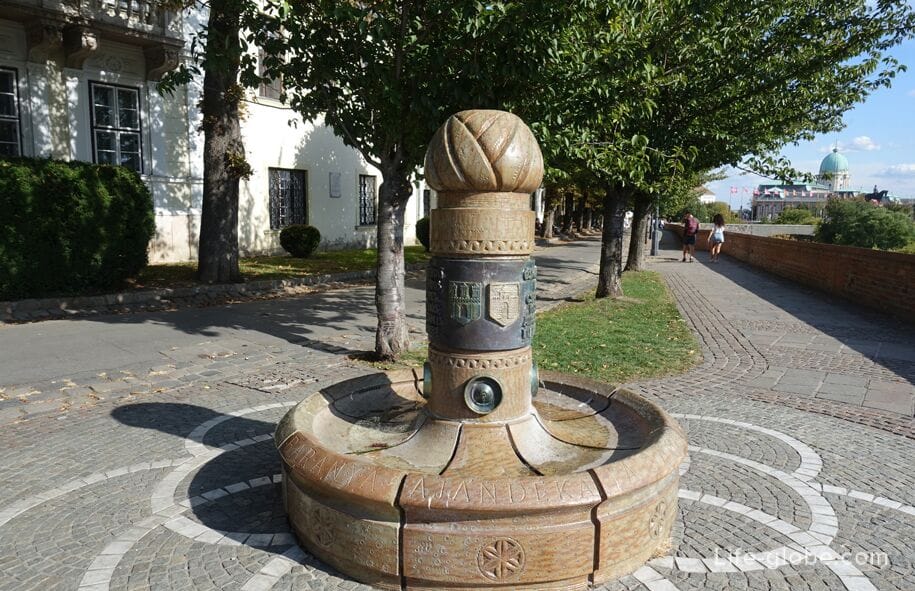
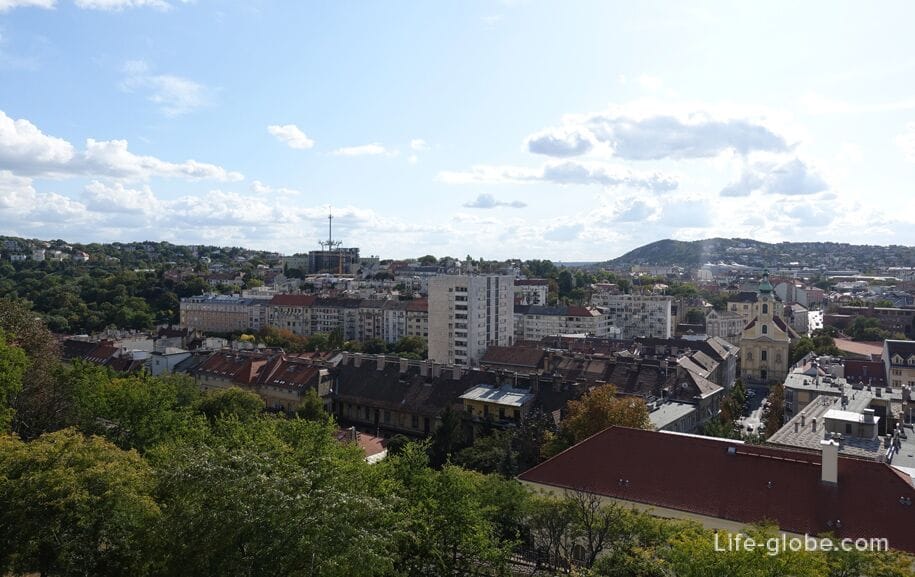
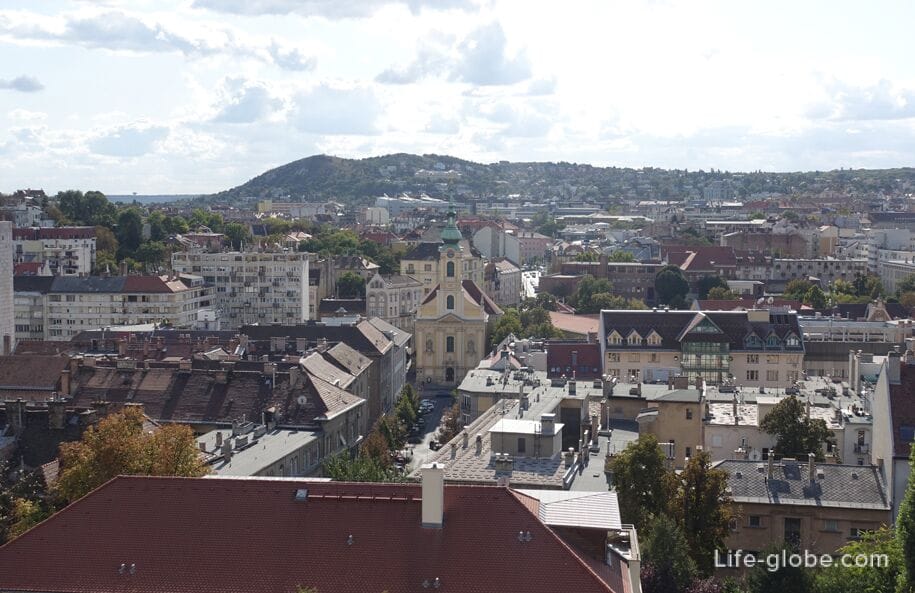

Area near the West wing of the Museum of military history. The wind swirls the flag of the country - Esztergom of Rondell (Orszagzaszlo - Esztergomi rondella).
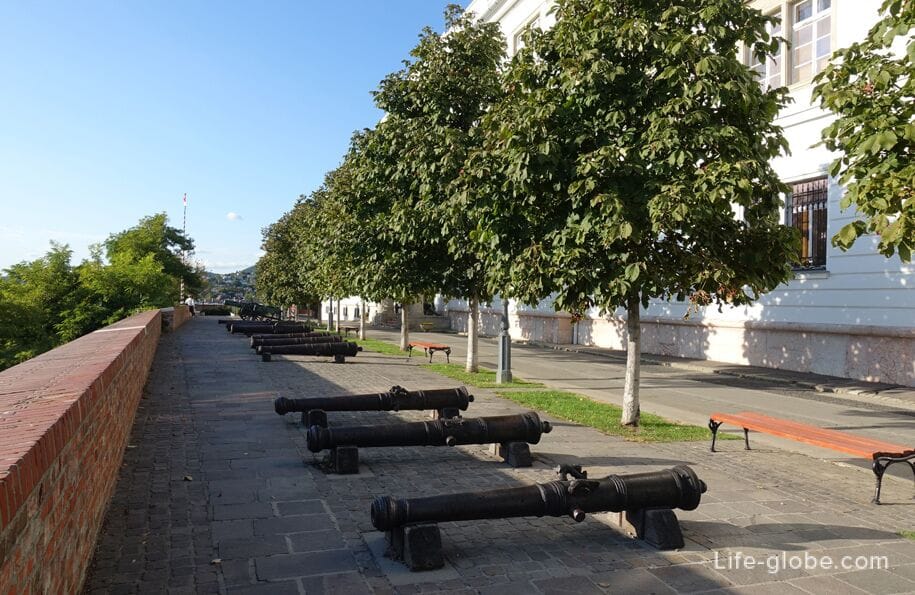
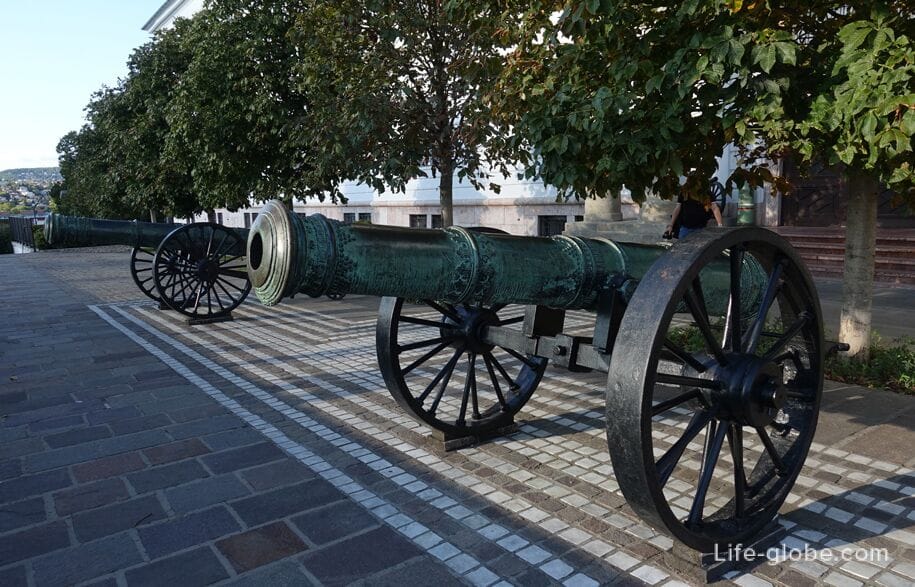
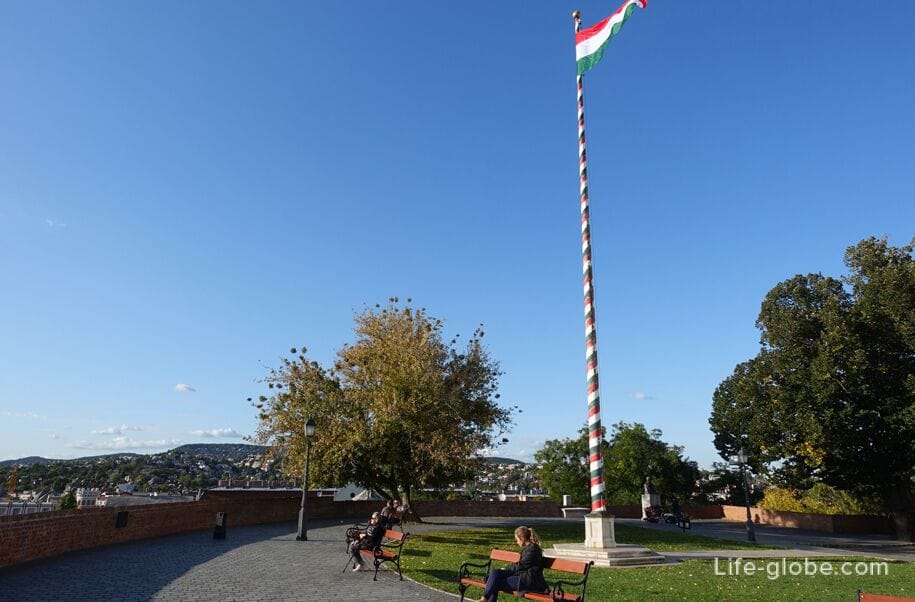


In the lower part of the West fortified walls, directly adjacent to those, is the entrance to the Museum "Hospital in the rock" or Museum hopper Rock Hospital, also known simply as the Hospital in the rock or the Hospital in the rock (Sziklakorhaz Atombunker Muzeum) is an object with an area of about 2000 m2, located under Buda castle, which was used during the Second world war and during the revolution of 1956.
The space was opened for tourists in 2008 as the Hospital's Museum Rock.
In the underground premises of the Museum are the exhibition of wax figures, as well as tools and equipment of civil protection concerning the history of the hospital and the development of military medicine.
Visiting the Museum is possible only in tour groups that go to the beginning of each hour during the opening hours of the Museum.
Opening hours of the Museum, conducting tours and admission fees can be found on the website: sziklakorhaz.
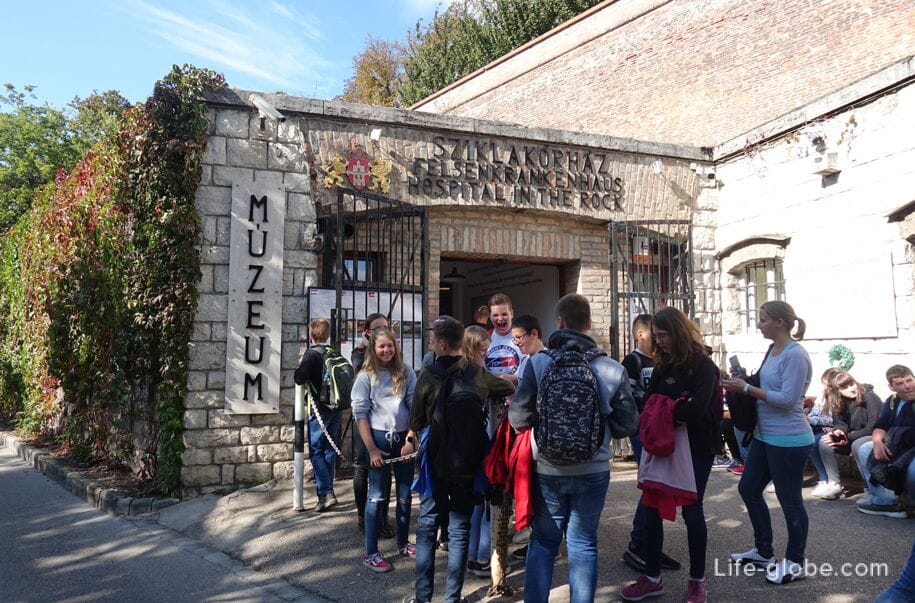
From the territory of the Buda castle, to the Museum "Hospital in the rock" you can go down the West staircase or using the Elevator.

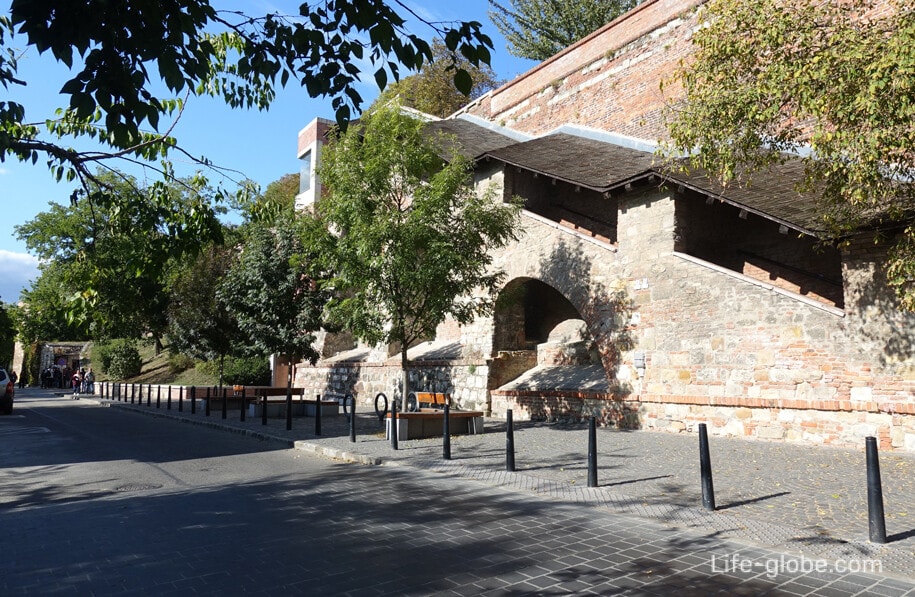
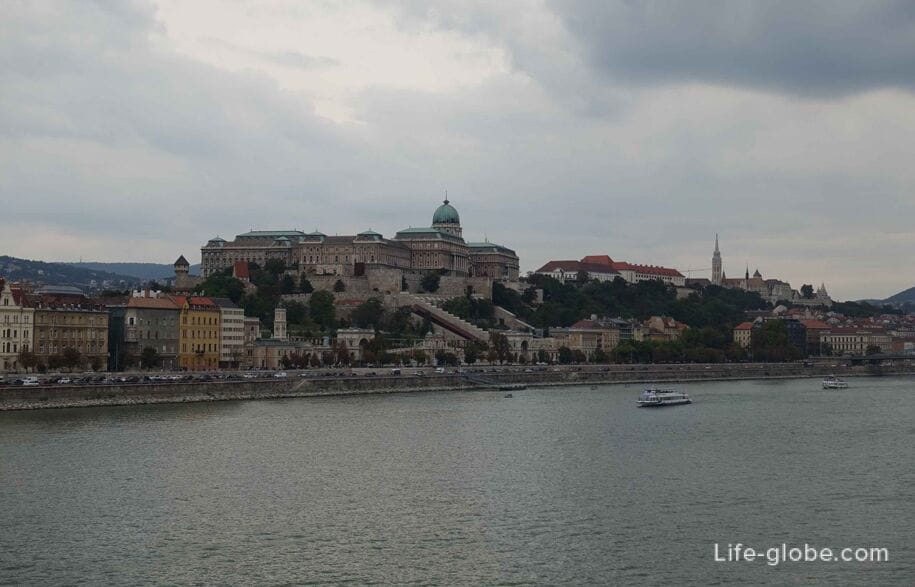
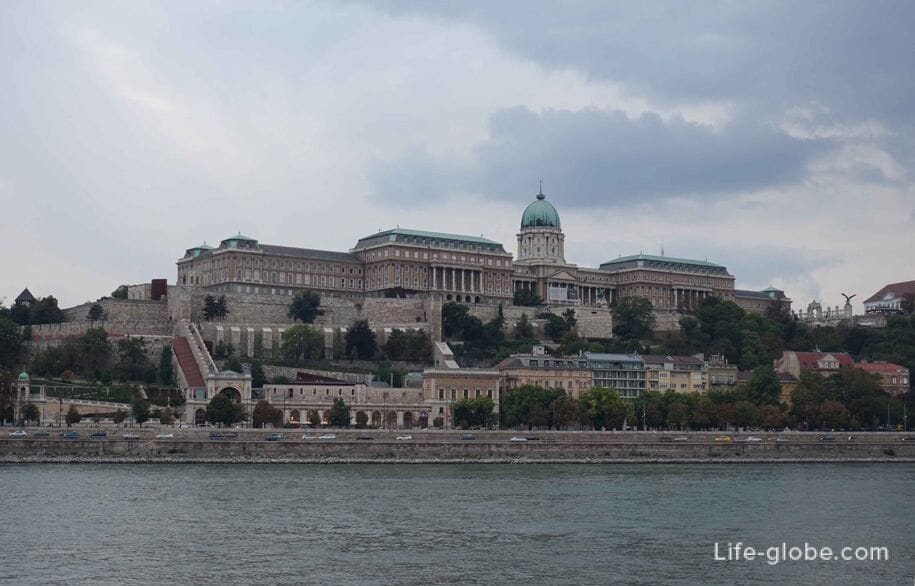

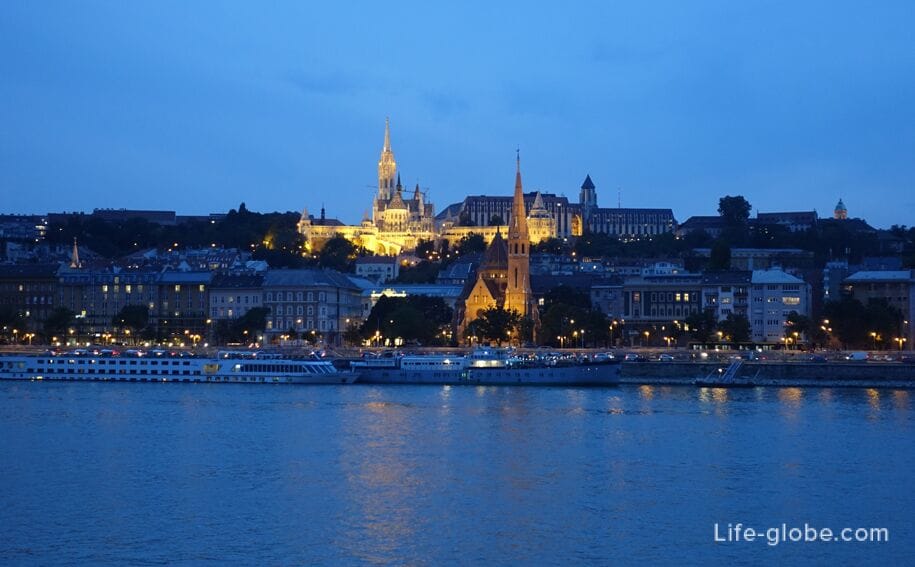
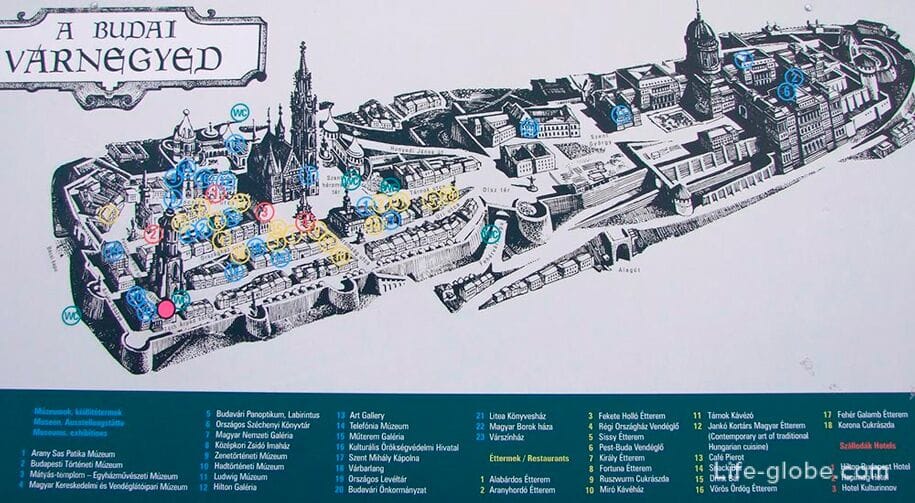
Walk from the Buda embankment, through the South and North gate or take the elevators or stairs on the West side (side region of Krisztinavaros).
On taxi, car, public buses No. 16, 16B, 116, 916.
The funicular to Castle hill. The lower cable car station located at the West side of Chain bridge, and the top - in St. George's square.
The 5-star Hilton Budapest free Wi-Fi, a fitness centre, sauna, indoor and outdoor Parking, a café bar, bistro grill and facilities for guests with reduced mobility.
Room rates may include Breakfast. Link to the hotel
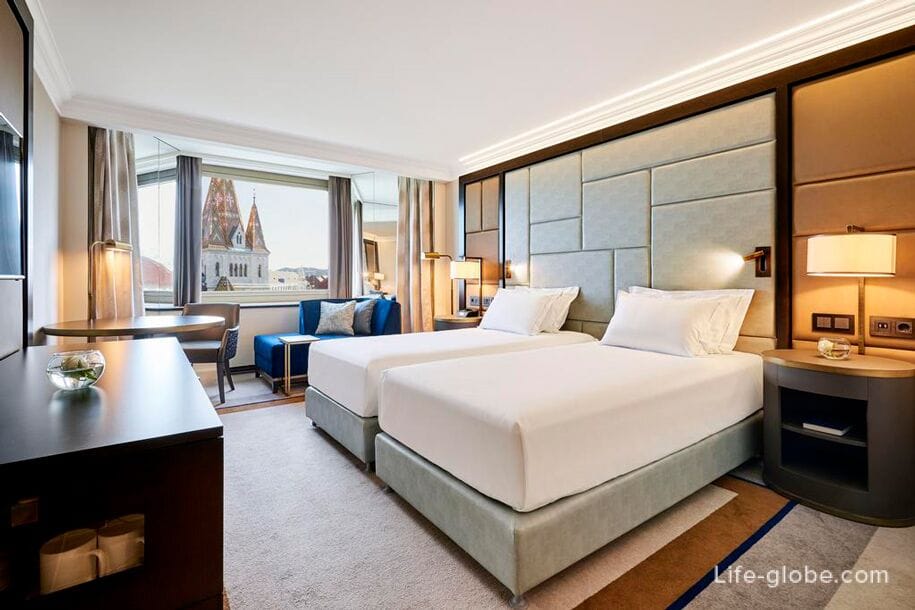
The 5-star St. George Residence - All Suite Hotel DeLuxe Suite, with free Wi-Fi, Parking, courtyard garden, restaurant and bar.
Apartments have a kitchenette.
Room rates may include Breakfast. Link to the hotel
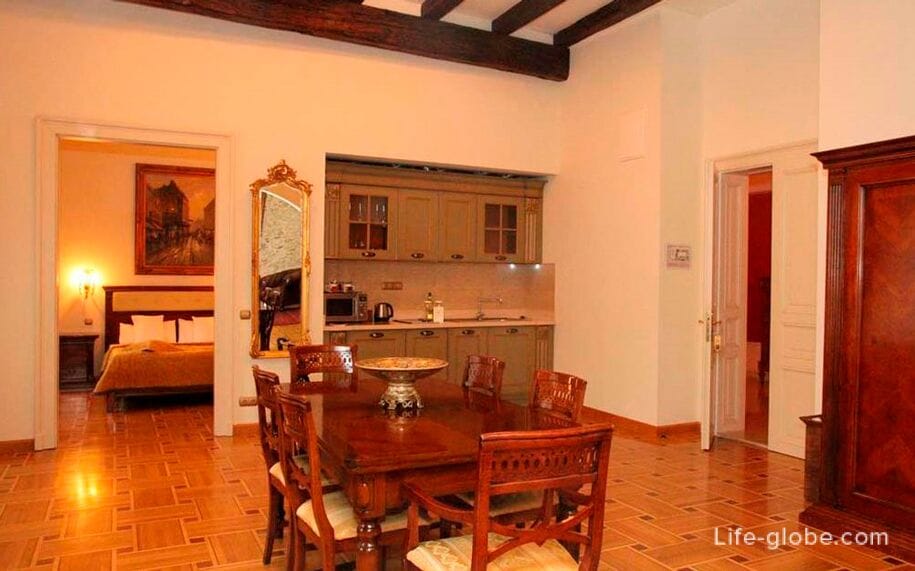
4-star hotel Baltazar Budapest is a Barber with free Wi-Fi, a restaurant and bar.
The rooms and suites of the hotel are decorated in warm colours. In-room amenities include: cable TV and small refrigerator. The bathrooms have a shower or bath.
Room rates may include Breakfast. Link to the hotel
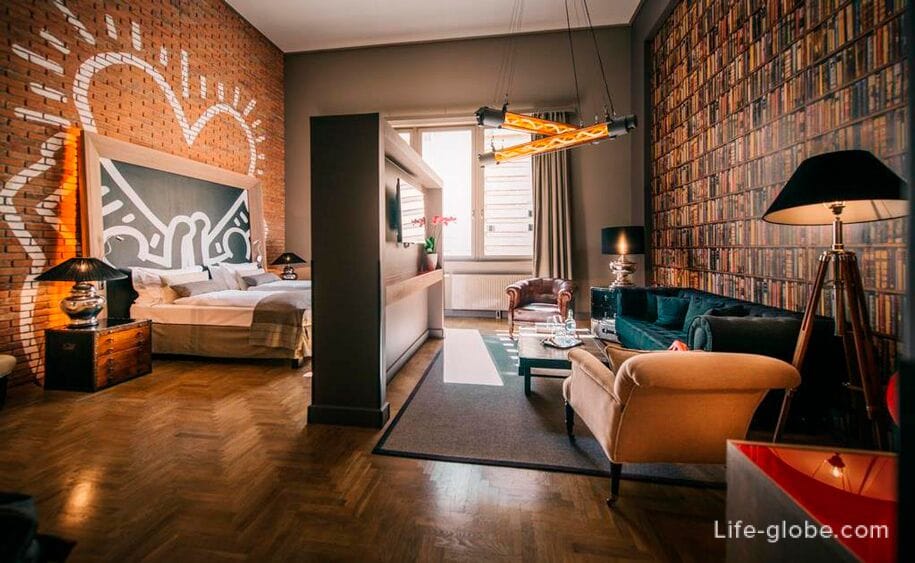
The 4-star Maison Bistro & Hotel with free Wi-Fi, round-the-clock reception Desk, courtyard, restaurant and terrace.
Rooms are equipped with air conditioning and a flat-screen TV with satellite channels. Some rooms include a Seating area. A Hairdryer and free toiletries.
Room rates include Breakfast. Link to the hotel

Apartments Castle Apartments Budapest with free Wi-Fi and a garden.
Amenities include: air conditioning, flat-screen TV, a washing machine and a kettle. The link apartments

All accommodation facilities in Budapest, including the Buda castle district, you can view and book here